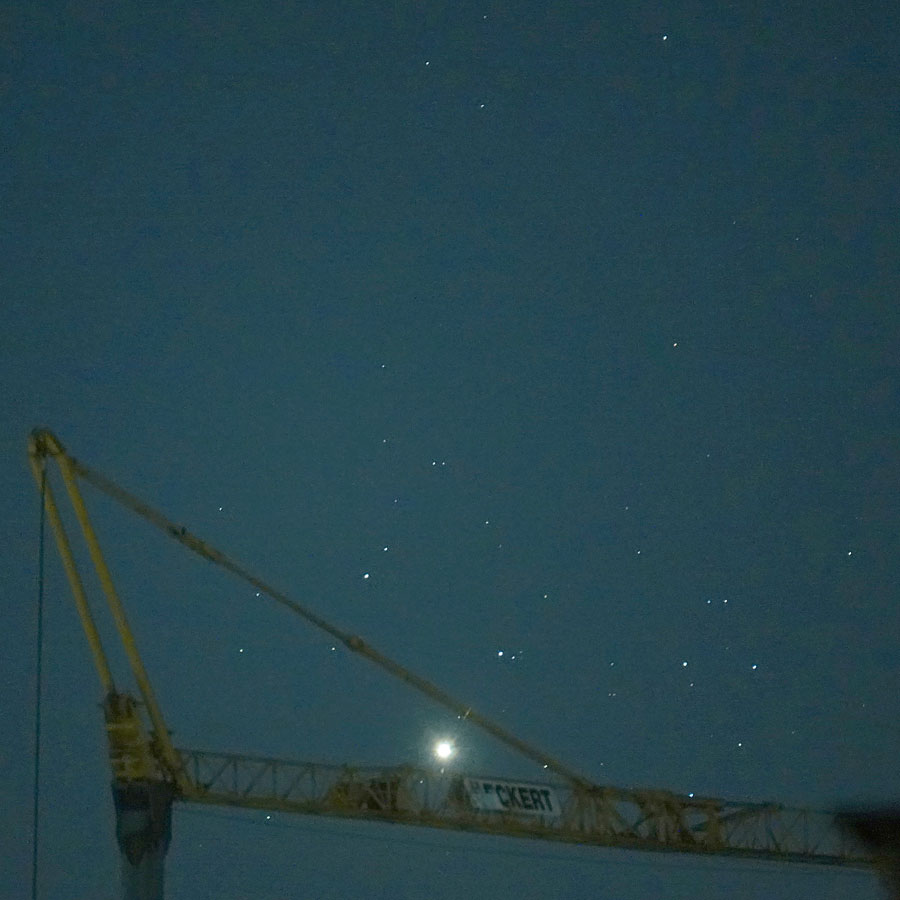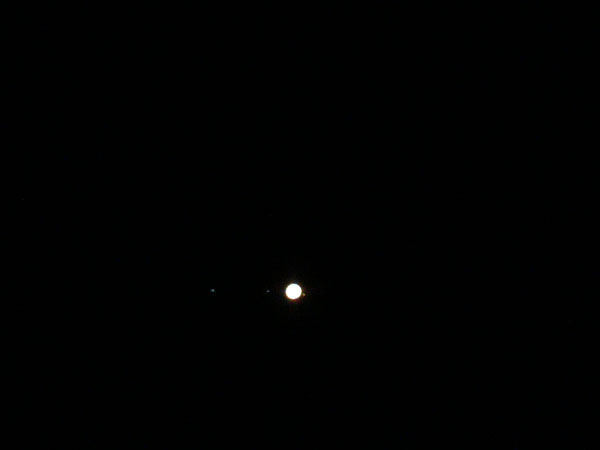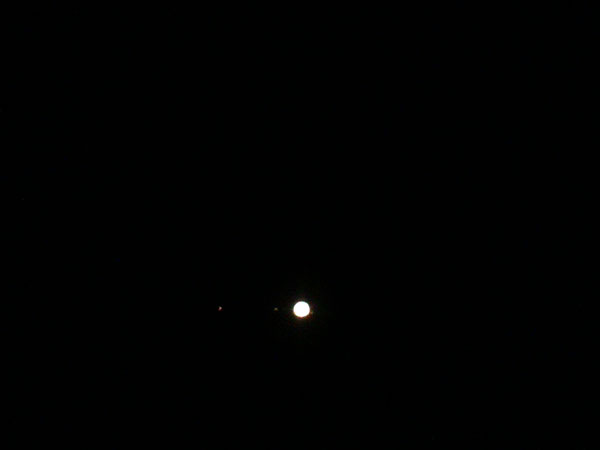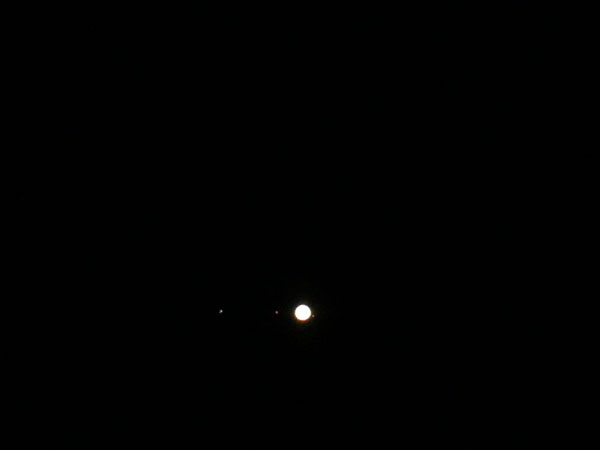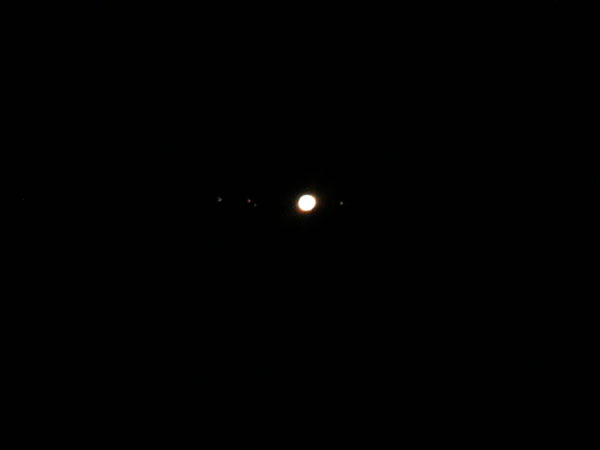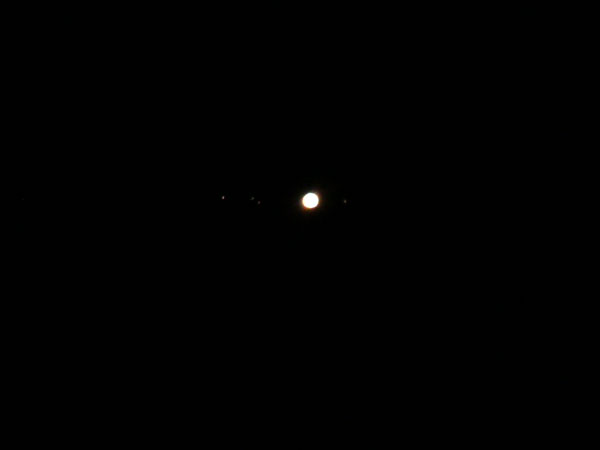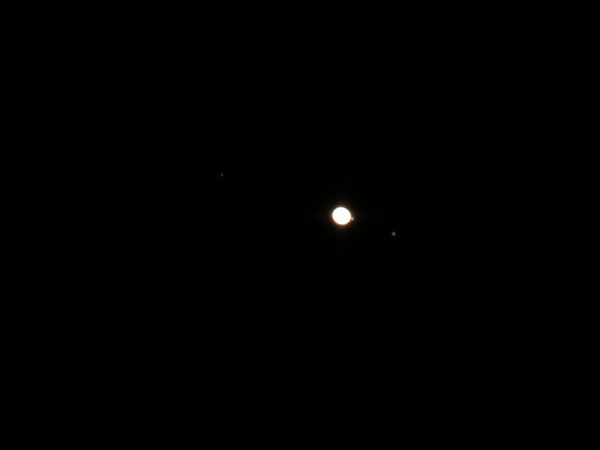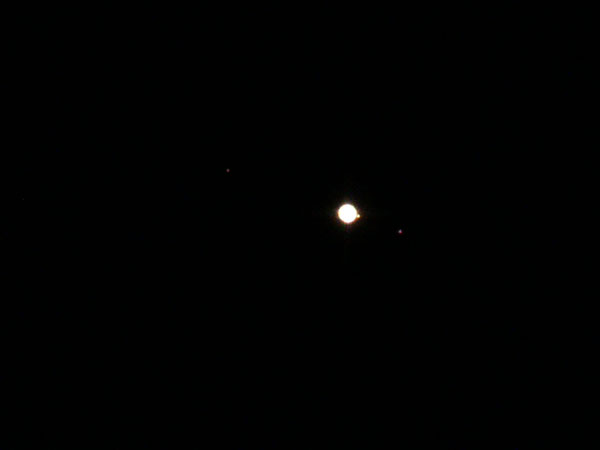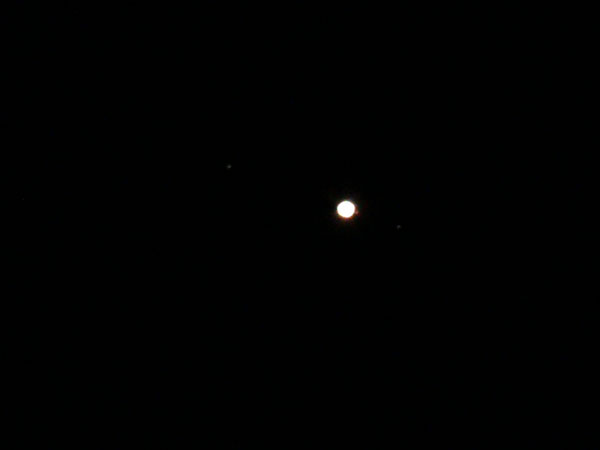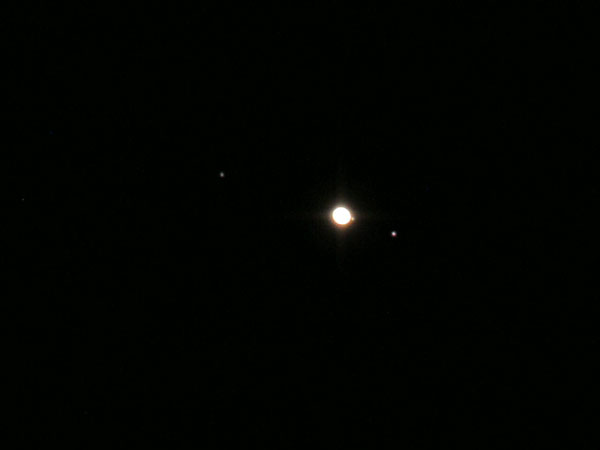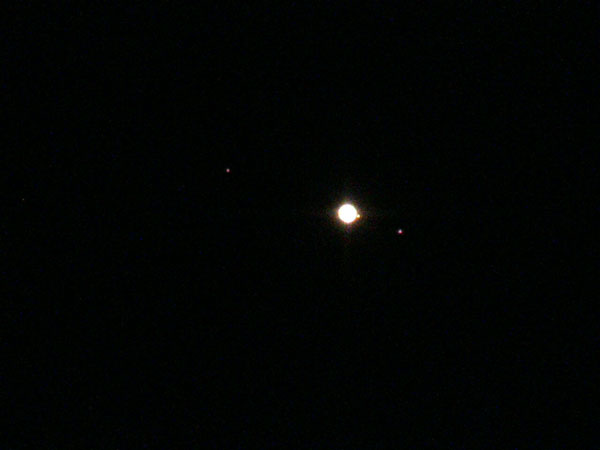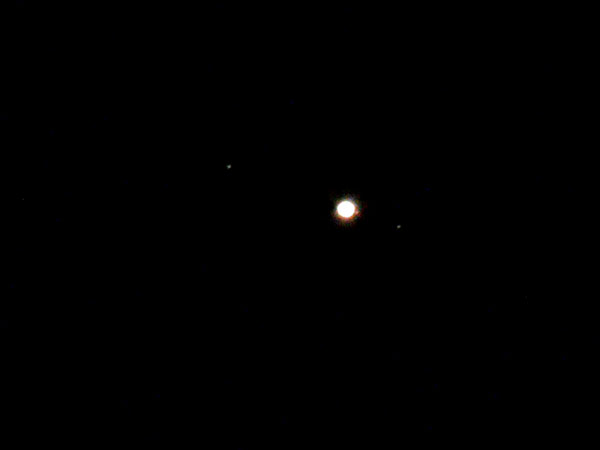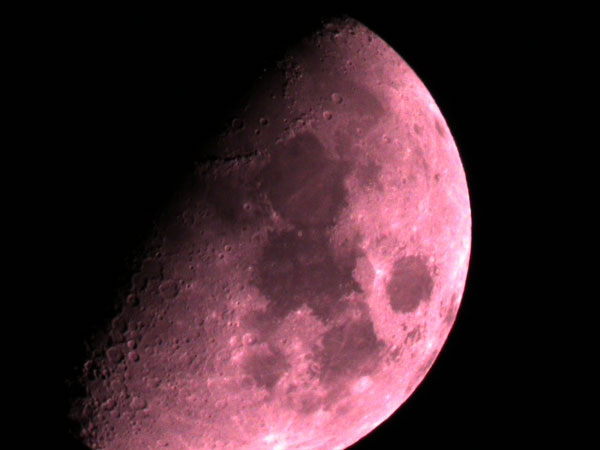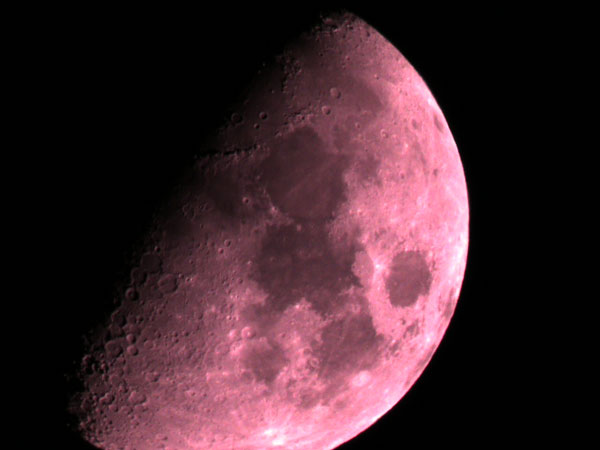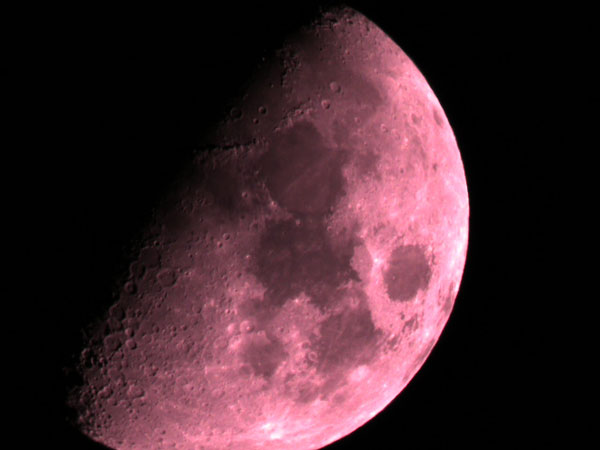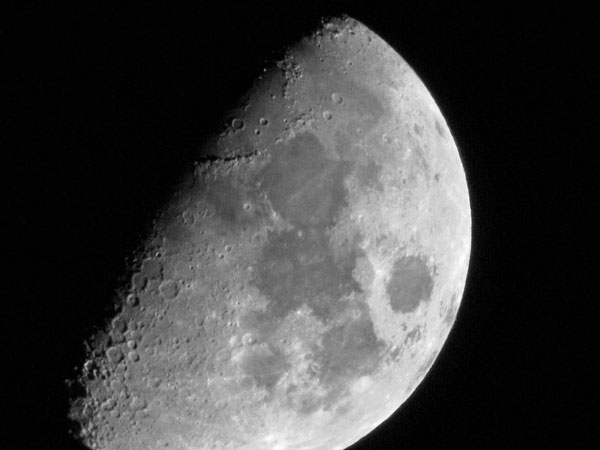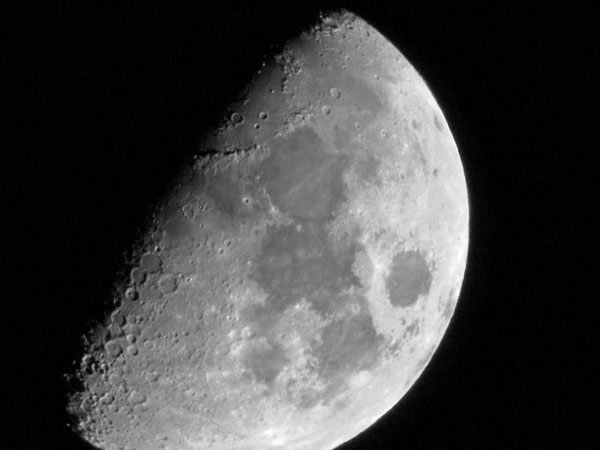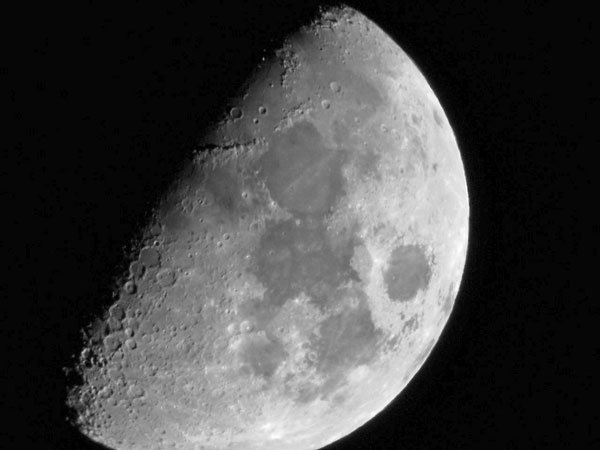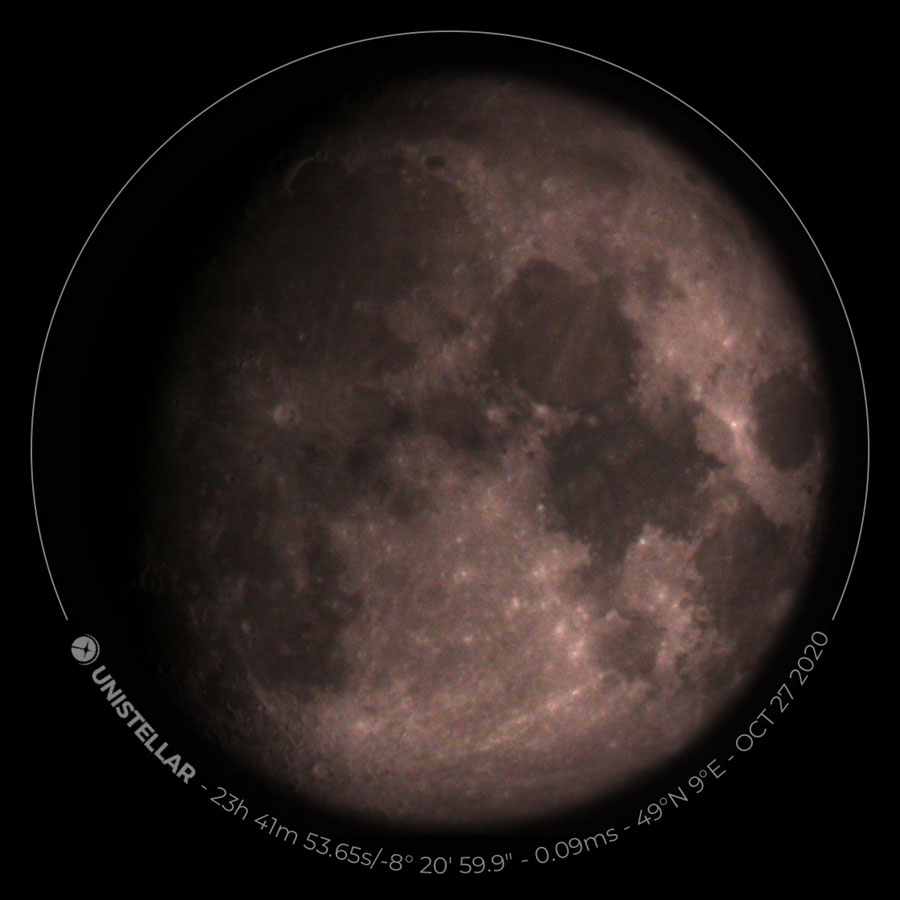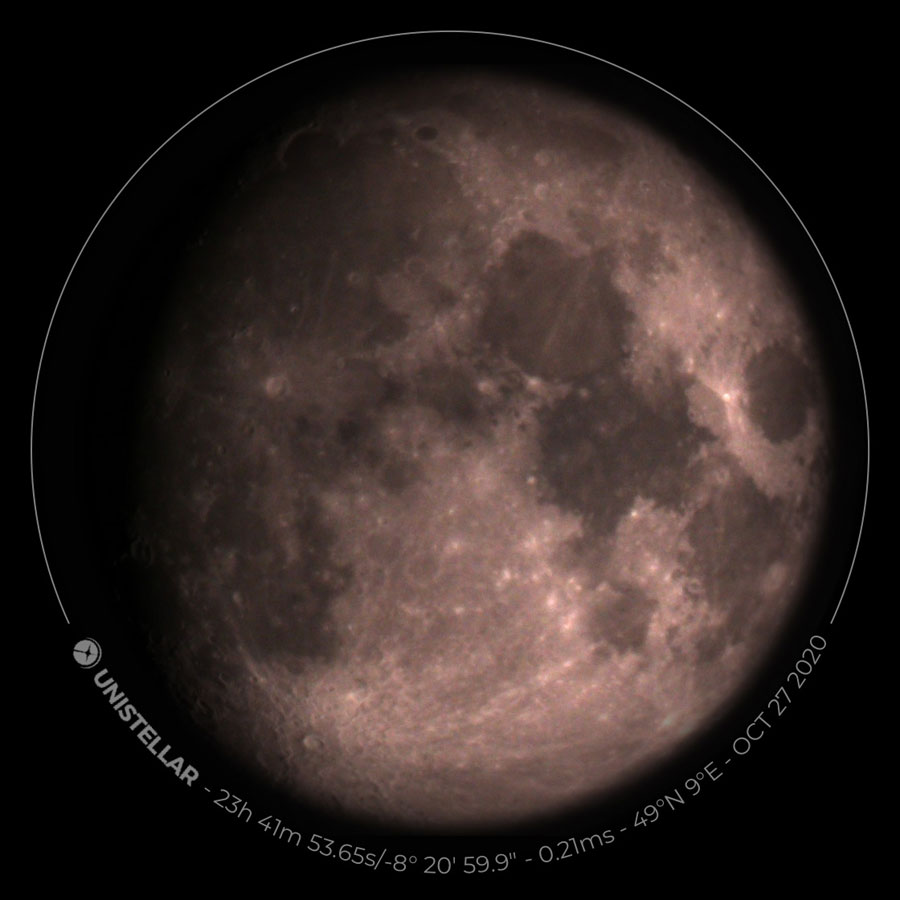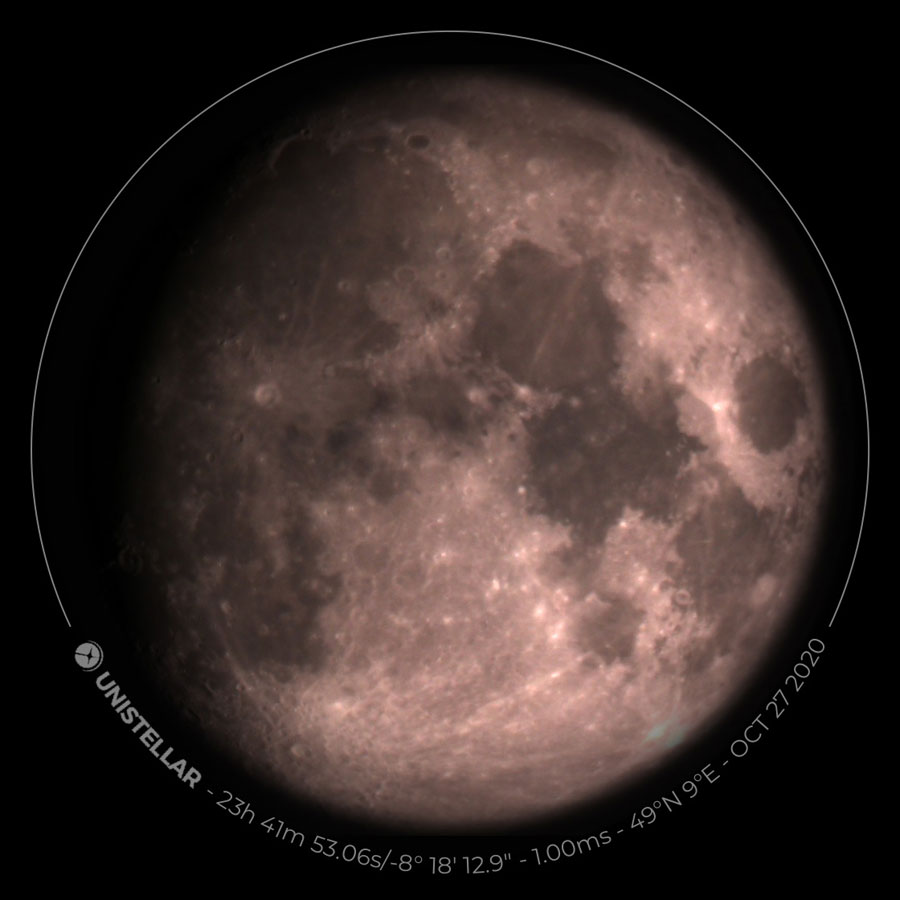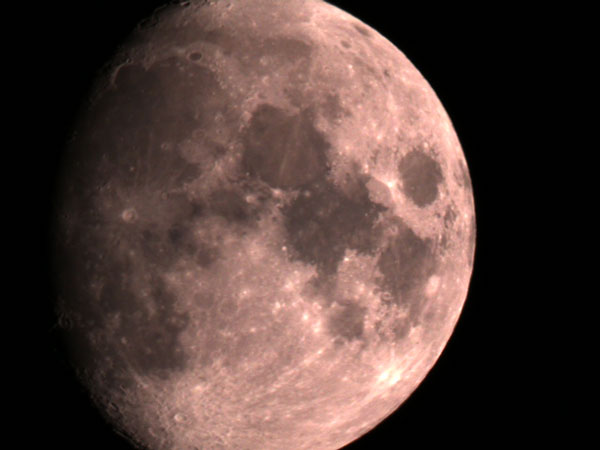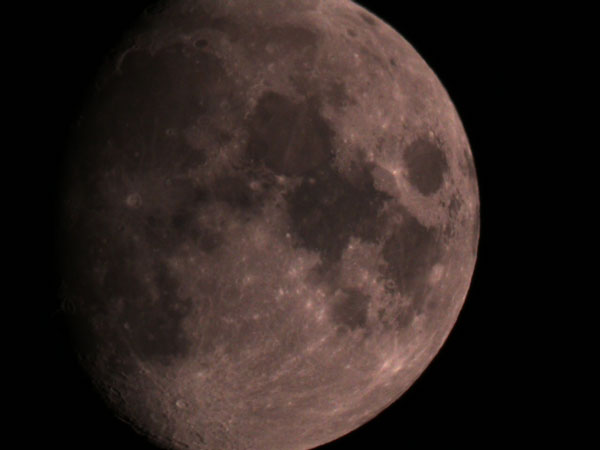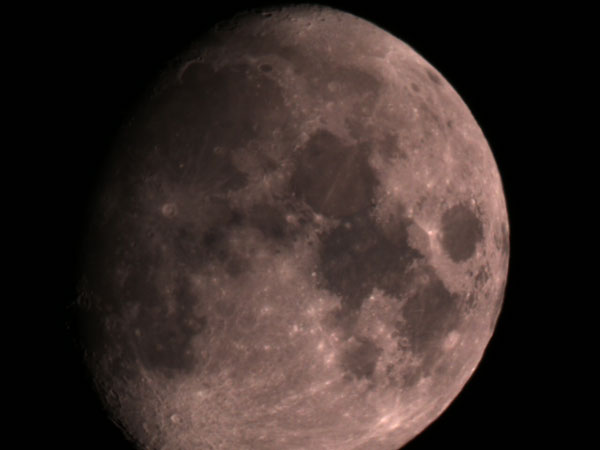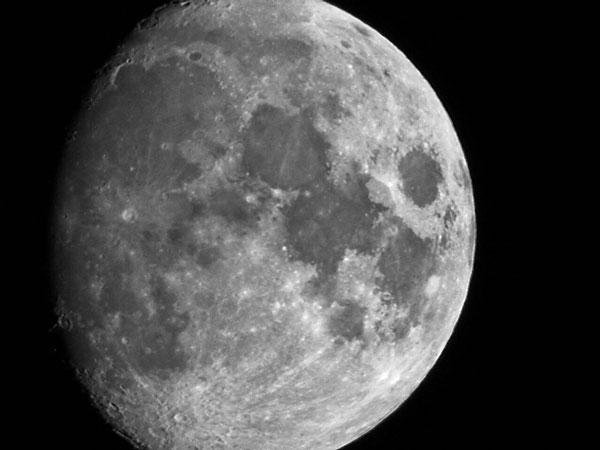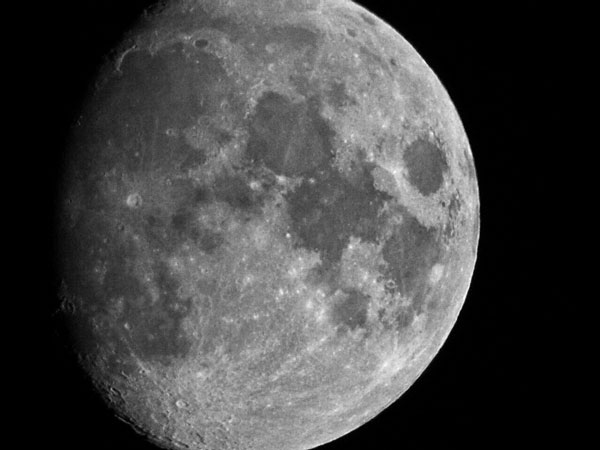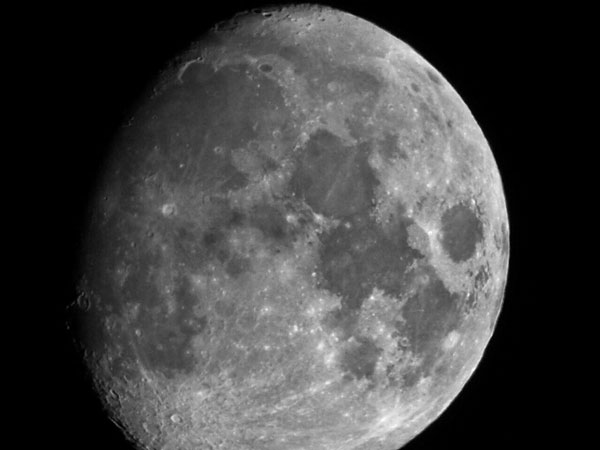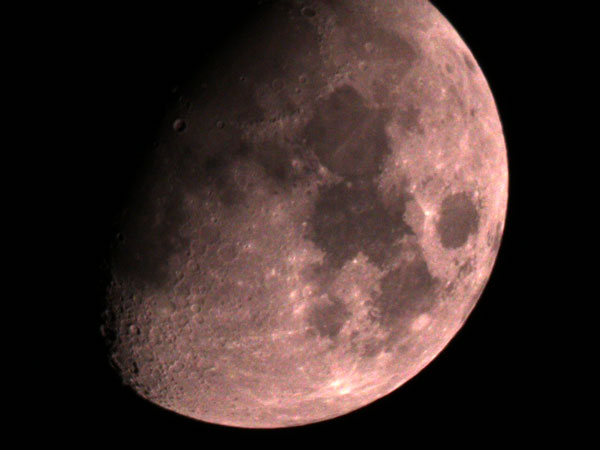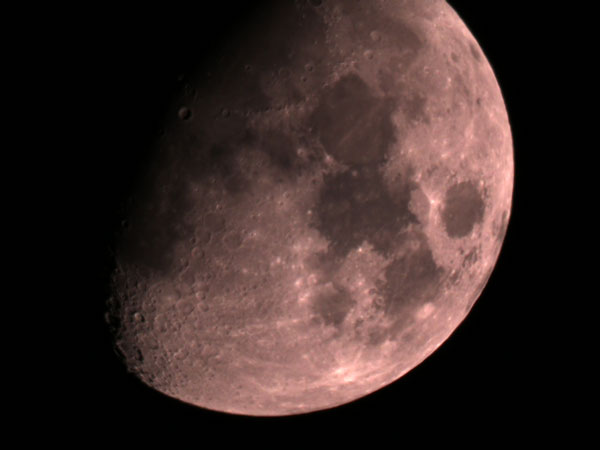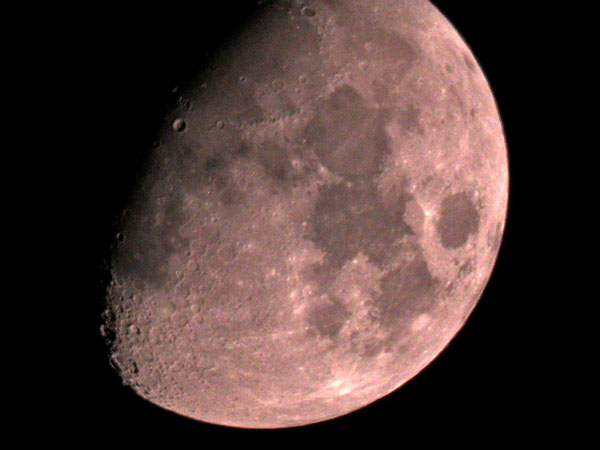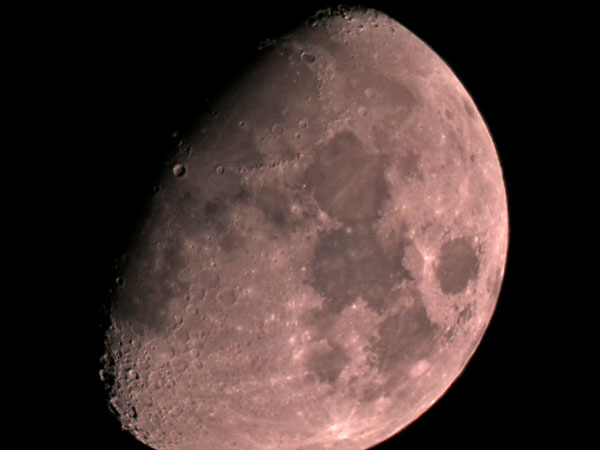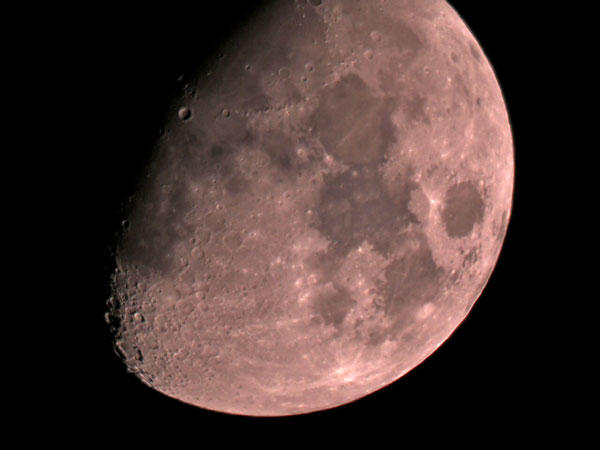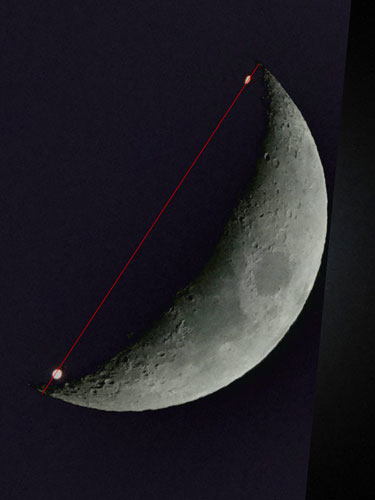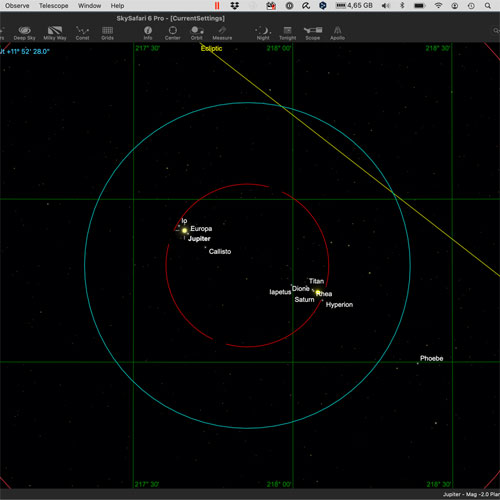Observations of the Sun, the Moon, and Planets 2020
Observation Overview | Special Events | References
It was not until 2018 that I began to observe the moon a little more in detail and to document my "more important" observations. On this page, I collect, somewhat unsystematically, my observations of the moon, the sun, and the planets from 2020, which might be of interest to other beginners and are therefore described here.
Note: Older observations are listed on the "Astronomy" overview page. The same applies to deep sky and comet observations.
Observation Overview
| Date 2020 |
Objects Observed | Location | Devices Used | Eyepieces and Cameras Used | Remarks | Further Remarks |
| Jan 1 | Moon, Venus | MH | Explorer 150PDS on AZ4 | All of my eyepieces | Tested my Explorer 150PDS on AZ4 with all my eyepieces at
the "almost half moon". At long 2" focal lengths, I saw
the shadow of the secondary mirror, because it was not quite dark
yet.
With my 4 mm UWA eyepiece (187.5 x) I tried to identify small craters at Rupes Altai; two craters with 14 km diameter were probably there; then I was able to identify Piccolomini T (8 x 8 km)! 10 mm SW (75 x): Moon fit straight in; 7 mm UWA (107 x): Moon fit straight in (82°), a little better than in the 10 mm Sky-Watcher eyepiece. |
Venus seen briefly: colorful and fuzzy, probably not quite round... |
| Jan 28 | Moon, Venus, Neptune | MH | PS72 on AZ Pronto | 7, 10, 16 mm | Saw Venus and Neptune at a distance of about 1° (1° 4')
(PS72 with 10 and 16 mm eyepieces)
Furthermore, I observed the crescent of the moon with PS72 with 7, 10, and 16 mm eyepieces |
On Jan 27, there was conjunction with a distance of about 4'! But
the sky was overcast; respectively, we missed the same on Jan 26 (1° 16')...
For the first time, we saw Neptune! |
| Feb 6 | Venus, Neptune, Mercury | MH | eVscope, LT binoculars | Venus, Neptun with eVscope; Mercury and Venus seen with the naked eye and binoculars | Neptune again, now in the eVscope! | |
| Feb 7 | Venus, Mercury | MH | LT binoculars | Mercury and Venus seen with the naked eye and binoculars | ||
| Mar 7 | Moon | MH |
|
Sony RX10 M4 | Nearly full moon photographed with RX10 M4 (clouds!) | Photo collages below! |
| Mar 9 | Moon, Venus, Uranus (Titania, Oberon) | MH | PS72 on AZ Pronto, eVscope | Sony RX10 M4 | PS72: Conjunction of Venus and Uranus (2.5°) eVscope: Uranus with moons Titania and Oberon |
For the first time, we saw Uranus (and two of its moons)! Photos below! |
| Mar 23-24 | Venus | MH | PS72 on AZ Pronto, SM-127 on AZ Pronto | Sony RX100 M4 | Mar 23, 2020: Observed Venus with PS72 and SM-127; it was half;
this was better visible with the SM-127 because of less color fringes.
With the SM-127, we also briefly observed M 42/43 and M 45. 24.3.2020: Observed Venus (maximum elongation for 2020) with SM-127 only and photographed it with 32mm/Sony RX100 M4. The half-Venus was better visible this day, because the sky was still brighter and Venus was higher. |
Photos below! |
| Mar 26-28 | Moon, Venus Pleiades |
MH | Sony RX10 M4 | Mar 26: First photographed the crescent moon (too bright), then moon
and Venus together Mar 27: moon and Venus photographed together Mar 28: moon and Venus photographed together, at the end also with Pleiades |
Photos below! | |
| Apr 1-6 | Moon, Venus Pleiades |
MH | SM-127 on AZ Pronto, C8 on AZ4 | Sony RX100 M4, Sony RX10 M4 (tripod) | Apr 1: observed moon and Venus with SM-127: Venus half, quite beautiful;
half moon Apr 2: observed the moon with SM-127 and C8; a little more than half moon; in C8 a little bit bigger and brighter; problems with focusing with the C8, moon not as uniformly sharp as with SM-127 Apr 3: observed the moon with SM-127; still a little more than half moon, Golden Handle(!); moon shortly seen in clouds and photographed (RX100 M4); around 11:30 p.m. Venus shortly visible in the Pleiades before setting; took a photo (RX10 M4) Apr 4: observed with SM-127; half-Venus good, also with RX100 M4; Venus with Pleiades worked only visually; moon good with RX100 M4 and also purely visual; Venus and Pleiades quite good with RX10 M4... Apr 5: observed with SM-127; moon with RX100 M4 and also purely visually, but already very faint... Binoculars (LT, OM): Venus and Pleiades, in the Pleiades only the biggest stars ("carriage") visible Apr 6: observed and photographed with PS72 and SM-127. PS72: half-Venus seen well with 24, 16, and 4 mm (108 x); at the end with less "color" SM-127: again observed and photographed with RX100 M4 the now nearly full moon |
Photos from April 3-6 below! |
| Apr 15 (M) | Moon, Jupiter, Saturn, Mars | MH | Sony RX10 M4 (tripod) | Eye/Sony RX10 M4: Jupiter, Saturn, Mars on a line; observed and photographed at half moon around 5 o'clock in the morning from the cemetery; moon in clouds; only two planets seen, Saturn was faint; on photos mostly all three planets can be seen; half moon only visible with strong underexposure | Photos below! | |
| Apr 23 | Venus | MH | C8 on AZ4 | Sony RX100 M4 | Crecent of the Venus photographed with C8 and RX100 M4 held to the eyepiece (40 mm, 26 mm) | Photos below! |
| Apr 25-28 | Venus, Moon, Pleiades | MH | SM-127 on AZ Pronto | Sony RX10 M4, Sony RX100 M4 | Apr 25: Venus and crescent of the moon photographed
with Sony RX10 M4 under various conditions; the Pleiades were visible on
some photos when it was darker Apr 26: Venus and crescent of the moon photographed with Sony RX10 M4 under various conditions Apr 27: Crecent of the Venus photographed with SM-127 and RX100 M4 held to the eyepiece (10 mm); crecent of the moon photographed with SM-127 and RX100 M4 screwed to the eyepiece (32 mm); Venus and crescent of the moon photographed with Sony RX10 M4 under various conditions Apr 28: Venus and crescent of the moon photographed with Sony RX10 M4 under various conditions |
Photos below! |
| May 5 | Venus, Moon | MH | SM-127 on AZ Pronto; eVscope | Sony RX100 M4 | About 8 p.m.: Crescent of the Venus observed (various eyepieces (24,
16, 10)) and photographed with Skymax-127 (with RX100 M4 and 32 mm eyepiece);
the sickle was fairly thin already. About 11 p.m.: Moon observed and photographed with eVscope (tracking mode only; screenshot) |
Photos below! |
| May 17 | Venus | MH | SM-127 on AZ Pronto | Sony RX100 M4 | About 11 p.m.: Crescent of the Venus observed shortly before setting with 16 mm eyepiece and photographed with Skymax-127 (with RX100 M4 and 16 mm eyepiece, camera held to the eyepiece); the sickle was even thinner. | Photos below! |
| May 18 | Venus | MH | SM-127 on AZ Pronto | Sony RX100 M4 | About 9:30 p.m.: Crescent of the Venus observed with 16 mm and 10 mm eyepiece and photographed with Skymax-127 (with RX100 M4 and 32 mm eyepiece, camera attached to the eyepiece); the sickle was even more thinner. | Photos below! |
| May 19 | Venus, Mercury | MH | PS72 on AZ Pronto | Sony RX10 M4 | From about 9 p.m. searched for Venus and Mercury, found Venus about
9:30 p.m. |
Photos below! |
| May 20 | Venus, Mercury | MH | Sony RX10 M4 | Venus and Mercury about 3.5° distant, Mercury below Venus; took photos with RX10 M4 | Photos below! | |
| May 21 | Venus, Mercury | Erk | Sony RX10 M4 | Venus and Mercury about 1.5° distant, Mercury below Venus; took photos with RX10 M4 | Photos below! | |
| May 23 | Venus, (Mercury) | Erk | Sony RX10 M4 | Venus and Mercury about 3° distant, saw only Venus (clouds); took photos of Venus with RX10 M4 | Photos below! | |
| May 24 | Moon, Mercury, Venus | Erk | Sony RX10 M4 | Crescent of the moon and Mercury about 4.5° distant
and Venus about 9° (measured 3.5/5° on photo) distant from moon;
took photos
with Crescent of the moon and Mercury with RX10 M4. > Because of the angular differences, this "find" is dubious... |
Photos below! | |
| Jun 29 | Moon | MH | PS72 on AZ Pronto | Moon briefly observed with PS72, then clouds appeared (specialties: Vallis Alpes) | ||
| Jun 30 | Moon | MH | SM-127 on AZ Pronto | Observed the moon more intensive with SM-127 and with computer support
(VMA): diverse craters (Tycho, Kepler, Copernicus, Gassendi;
auch Clavius, Maginus und Longomontanus), mountains (Montes Alpes, Montes
Caucasus, Montes Apenninus, Montes Spitzbergen, Mons Pico), and other
structures (Vallis Alpes, Rima Hyginus, Rupes Altai, and Rupes Recta. Astrid saw the beginning of the "Golden Handle", although a Website had announced it for the following night. It would have been observable from 11:30 p.m. on (Website in error)... |
||
| Jul 1 | Moon | MH | PS72 on AZ Pronto | Moon briefly observed with PS72; Golden Handle already over... | ||
| Jul 9 | Jupiter, Saturn | MH | PS72 on AZ Pronto; TLAPO1027 on AZ4 | PS72 compared with TLAPO1027 using M 3, but also Jupiter and Saturn. TLAPO1027 clearly better... | ||
| Jul 18 | Jupiter, Saturn | MH | SM-127 on AZ Pronto | We observed briefly Jupiter and Saturn with the Skymax-127 (32 mm, 10 mm). | We also observed the comet C/2020 F3 (NEOWISE) on the Heiligenstein hill | |
| Jul 23 | Jupiter, Saturn | Erk | SM-127 on AZ Pronto | Observed Saturn (ring) and Jupiter (1 moon to the left, 3 moons to the right) from the balcony (briefly before 1 a.m.) with the Skymax-127 (32 mm, 16 mm). |
Also observed the comet C/2020 F3 (NEOWISE) in front of the house; moreover, I observed globular star clusters, mostly in Ophiuchus. | |
| Aug 19, 20, 25 | Jupiter, Saturn | MH | eVscope | Observed Saturn (ring) and Jupiter (various moons) with the eVscope in Live View mode. | Photos below! | |
| Aug 27 | Moon, Jupiter, Saturn | MH | PS72 on AZ Pronto; TLAPO1027 on AZ4 | 16/24, 10/16, 4/7, -/4 mm (PS/TL) | PS72 compared with TLAPO1027 using
the moon, but also Jupiter and Saturn. TLAPO1027 clearly
better (details elsewhere)... Saturn up to 100 x (4/7 mm), Jupiter up to 100 x, in the APO also with 4 mm, that is, nearly 180 x. Then clouds appeared... |
Also observed some DSO; it was one day after half moon, which was already disturbing around the Milky Way... |
| Oct 10 | Jupiter, Saturn, Mars | MH | PS72 on AZ Pronto; TLAPO1027 on AZ4 and AZ Pronto; eVscope | 26/35, 4/7, 16/10 oder 7; single: 7, 4, 26, 16; 2 x extender with 4 and 7 mm (TLAPO) | PS72 compared with TLAPO10277 using
Jupiter and Saturn. TLAPO1027 clearly
better (details elsewhere)... Saturn up to nearly 180 x with TLAPO; gets
darker already at 10 x with the PS72. Observed Mars with TLAPO1027 on AZ Pronto around midnight (up to nearly 180 x); a orange-yellow disk, but no details except for perhaps a dark shade at the center. Mars also observed with the eVscope: a small orange-yellow disk (see below). |
Jupiter with 4 moons and definite stripes; Saturn seen well with its ring, but even at the highest magification, no Cassini division recognizable. |
| Oct 11 | Jupiter, Saturn | MH | C8 on AZ4 | 24 mm, 16 mm | Jupiter and Saturn observed with C8 | Jupiter with 3/4 moons; stripes hardly to see; Saturn seen well |
| Oct 19 | Mars | MH | eVscope | Observed Mars | ||
| Oct 24 | Jupiter, Saturn, Mars, Moon | MH | eVscope | Observed Saturn (ring), Jupiter (various moons), Mars, and the Moon with the eVscope in Live View mode. | Jupiter poor to photograph; photos below! | |
| Oct 27 | Jupiter, Saturn, Moon | MH | eVscope | Observed Saturn (ring), Jupiter (various moons), and the Moon with the eVscope in Live View mode. | Photos below! | |
| Nov 5 | Jupiter, Saturn, Mars | MH | C8 on AZ4, TLAPO1027 on AZ Pronto and AZ4 | 26, 24, 16, 10, 7, 4 mm | Observed Saturn (ring), Jupiter (4 moons), and Mars with C8 on AZ4 and TLAPO1027 on AZ Pronto and later AZ4. Mars remained a yellow disk; even color filters did not help... | |
| Nov 14 | Mars, Neptune, Pluto | MH | eVscope | Observed Mars, Neptune, and Pluto | Photos below! | |
| Nov 24 | Moon | MH | eVscope, RX10 M4 | Photographed the moon (a little more than half moon) | Photos below! | |
| Dec 16 | Jupiter, Saturn, Mars, Moon | MH | C8 on Star Discovery, C5 on photo tripod, later on AZ Pronto, SM-127 on AZ Pronto | 40, 24, 16, 10 mm | C8 on Star
Discovery: Jupiter
(4 moons) and Saturn with 40 mm the same FOV; Mars "wobbly" C5 on photo tripod, later on AZ Pronto: Crescent of the moon nice, but observed with reducer initially (mishap); later observed with 24 mm and without reducer (AZ Pronto) SM-127 on AZ Pronto: Ditto the crescent of the moon; image clearly larger because the C5 was used with a reducer; Astrid found the image in the C5 better C5 on AZ Pronto: Mars "wobbly" |
|
| Dec 25 | Moon Jupiter, Saturn, Mars |
MH | C5 on Star Discovery, SM-127 on AZ Pronto, LT and TS binoculars | 24, 32 mm | Observed Jupiter and Saturn (0.5°) with the naked eye, binoculars,
and telescopes (C5, Skymax-127) briefly
from our balcony and tried to take photos.
They disappeared soon behind a tree and set shortly after...
Afterwards, observed the moon (a little more than half, Golden Handle already passed) using my C5 (Star Discovery, 24 mm) and my Skymax-127 (AZ Pronto, 32 mm); finally, observed the "wobbly" Mars (same eyepieces). Did not manage to find M 15, before clouds came... |
Photos below! |
| Dec 28 | Moon Jupiter, Saturn |
C5 on AZ Pronto | 24, 32 mm | Jupiter and Saturn (approx. 50') briefly observed with the naked eyes and C5 telescope (24, 32 mm) from balcony behind tree. Went down fast. Almost full moon fuzzy in the clouds... |
All observations done in Mühlhausen/Kraichgau (MH), except for where noted otherwise.
Special Events
January 1, 2020: Searching Visually for Small Craters with Explorer 150PDS
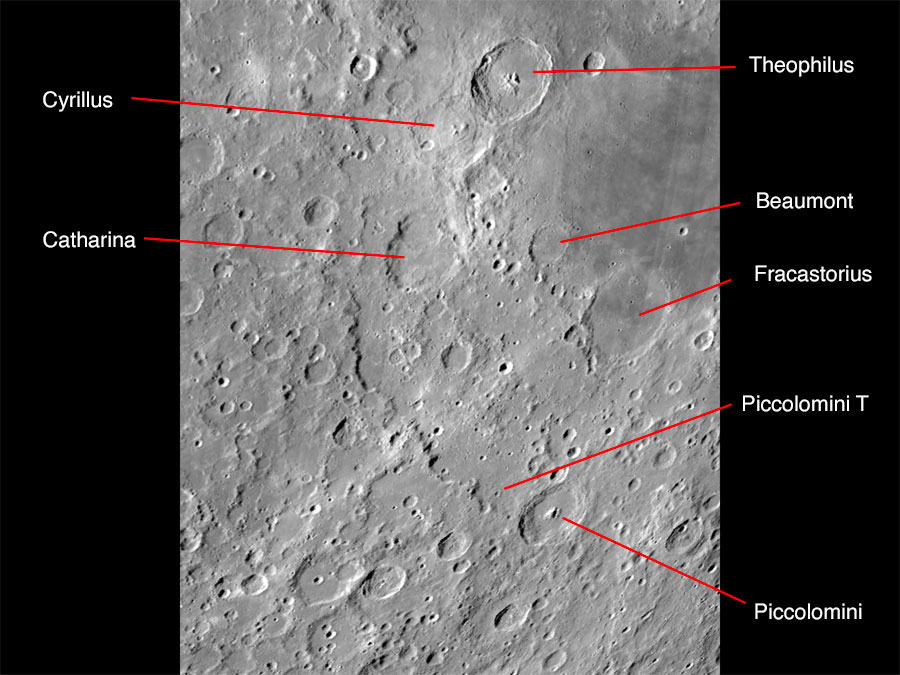 |
 |
|
Crater Piccolomini T (diameter: 8 km) shown in Virtual Moon for demonstration |
Description of Piccolomini T in Virtual Moon |
February 6, 2020: Neptune
Neptune is is very small in the eVscope and reminds of small blue planetary nebulae.
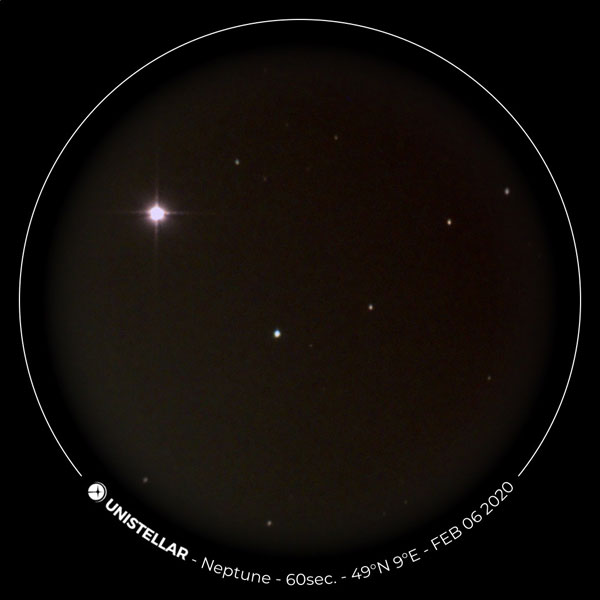 |
Neptune - Feb 6, 2020 |
March 7, 2020: "Moon in Clouds" Collages (Sony RX10 M4)
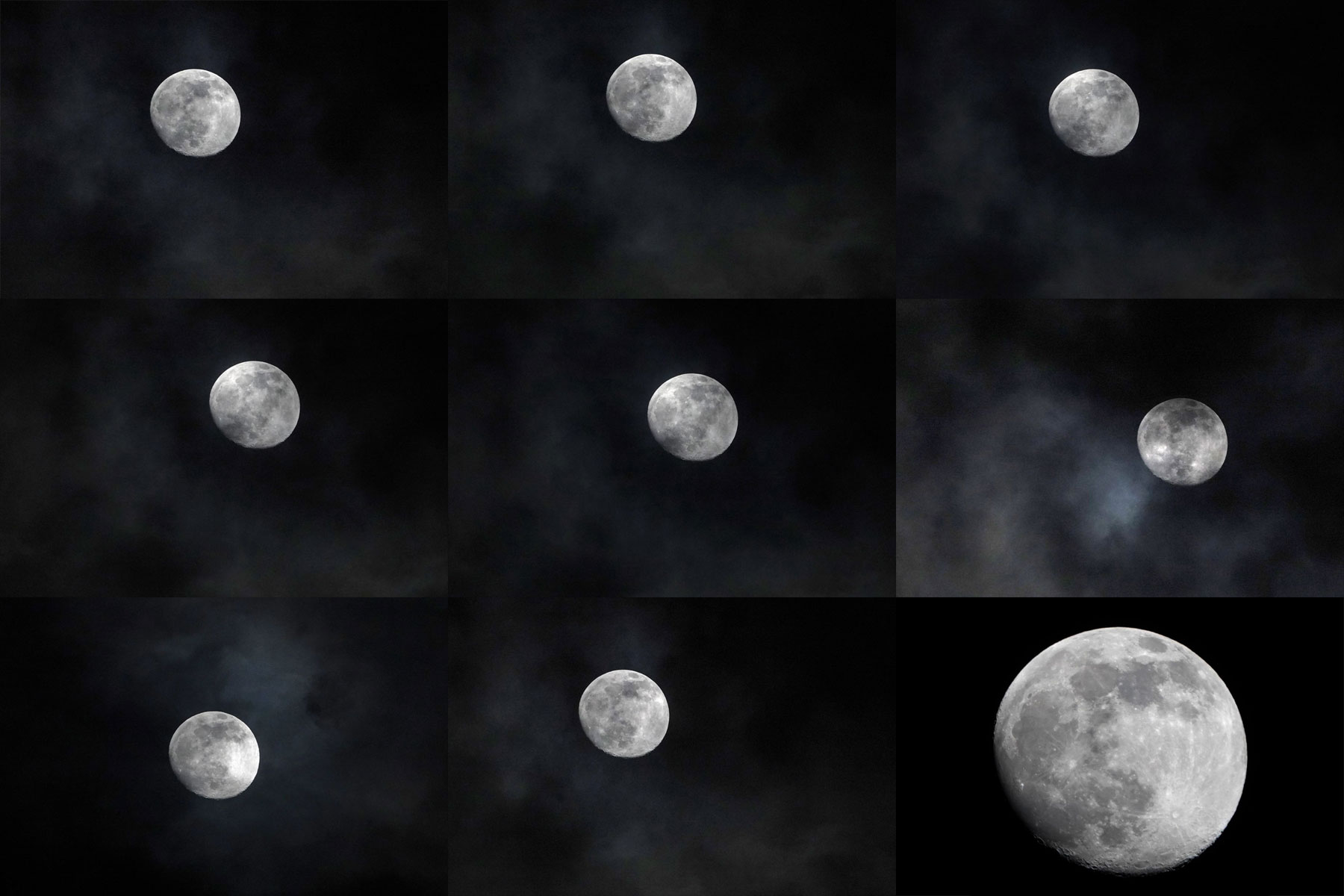 |
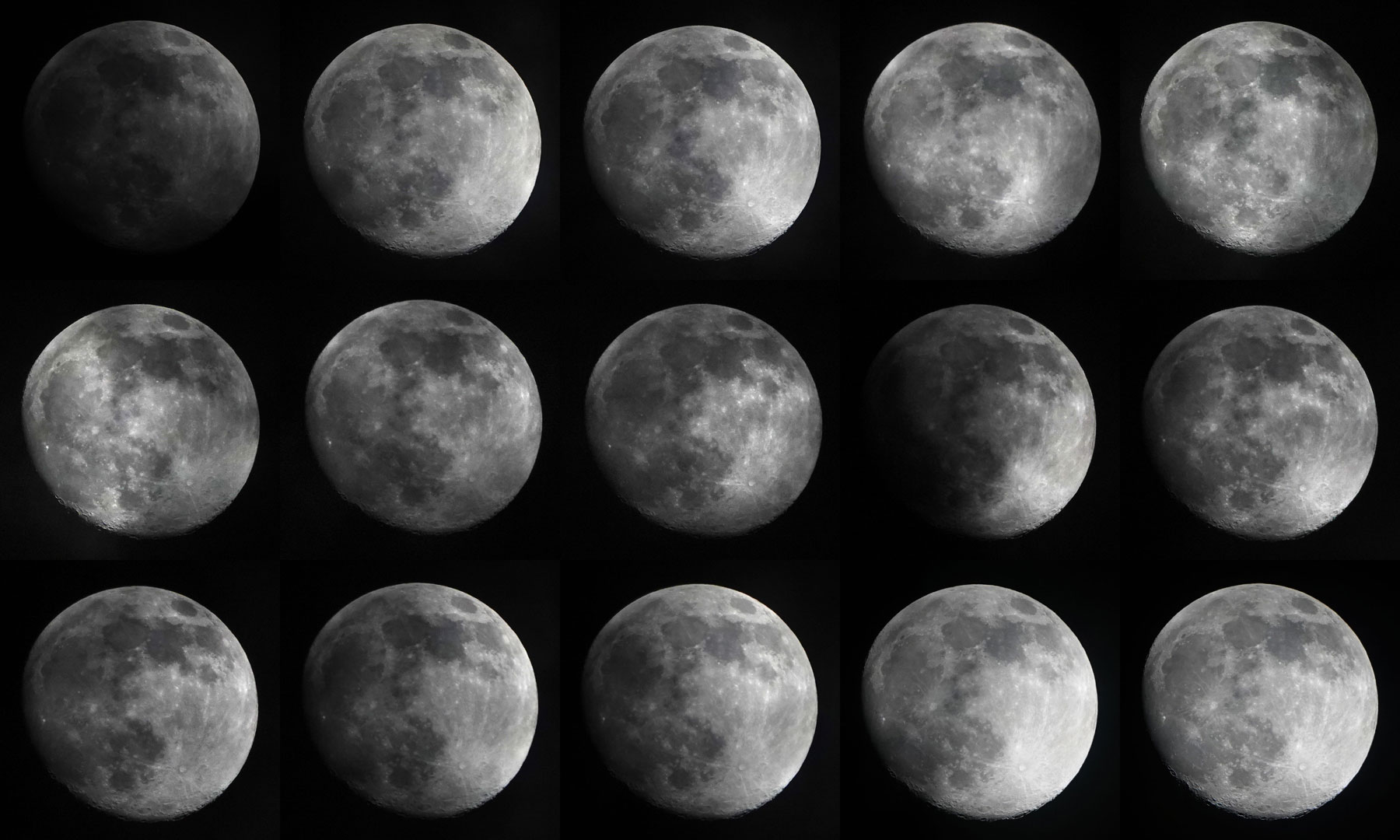 |
See page Photos of the Moon with RX10 M4 - March 2020
March 9, 2020: Uranus (Titania, Oberon), Super Moon (Sony RX10 M4)
Uranus
Uranus is is very small in the eVscope (not as small as Neptune, however), but if you look closely, you can find the the moons Titania and Oberon.
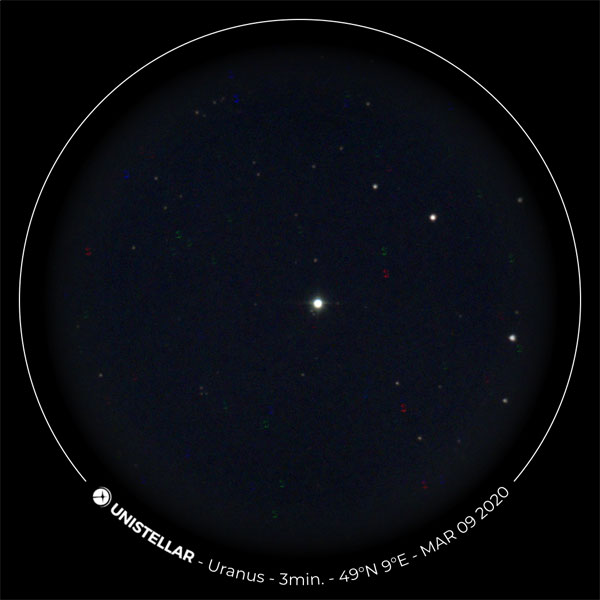 |
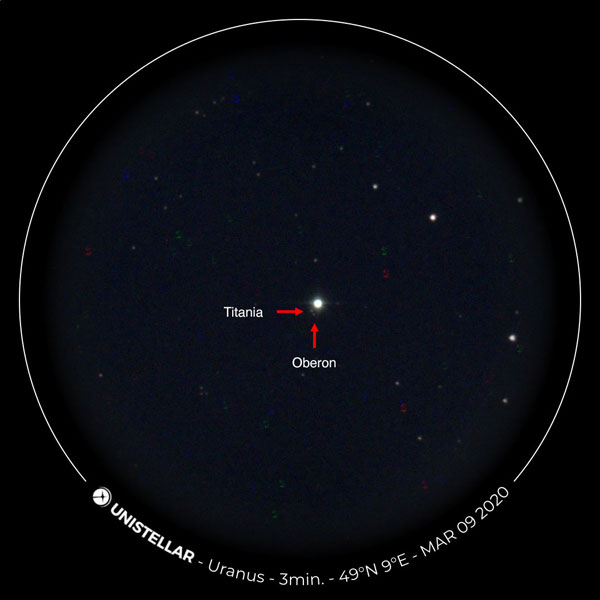 |
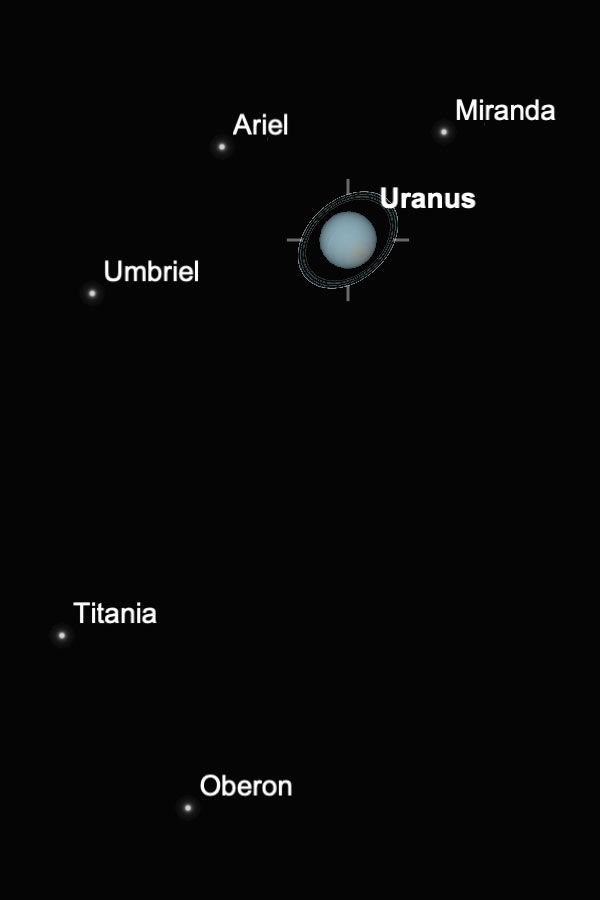 |
||
Uranus - March 9, 2020 |
Uranus - March 9, 2020, with labels for the moons |
The situation shown in SkySafari |
Supermoon
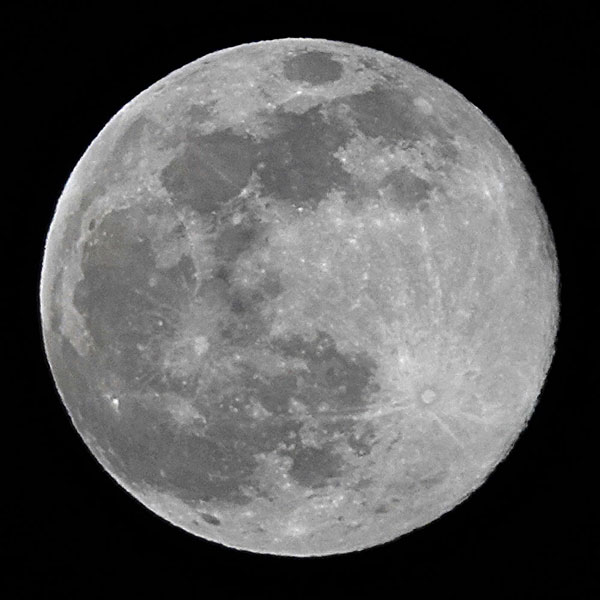 |
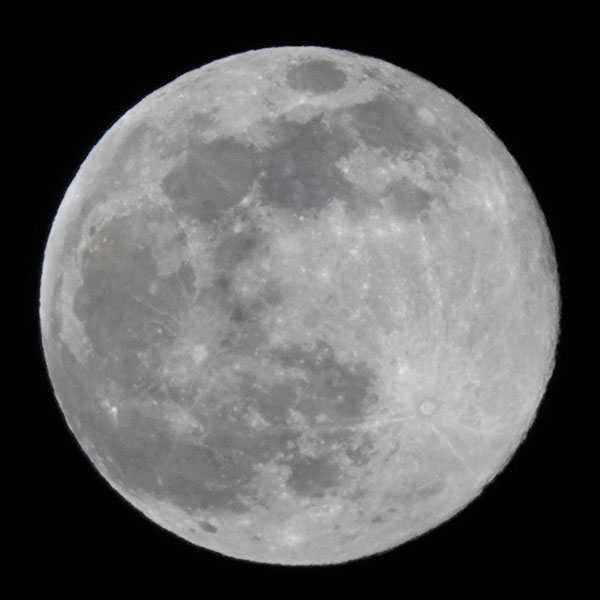 |
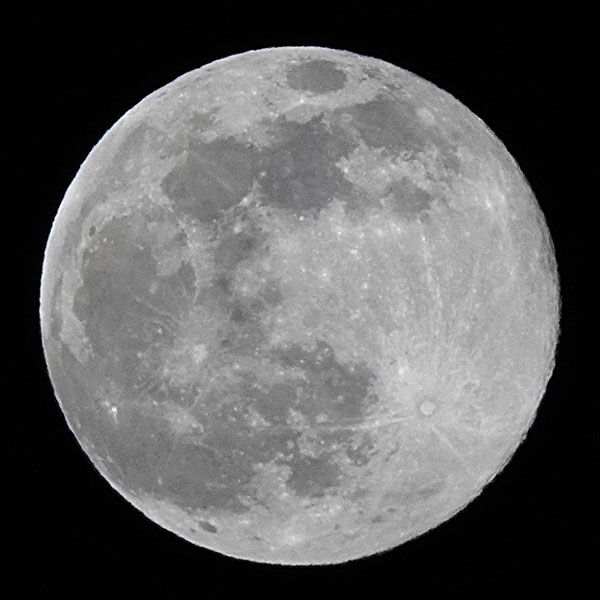 |
||
Processed, sharpened |
Processed |
Same photo, processed, sharpened |
See page Photos of the Moon with RX10 M4 - March 2020
March 24, 2020: Half-Venus - Maximum Elongation for 2020
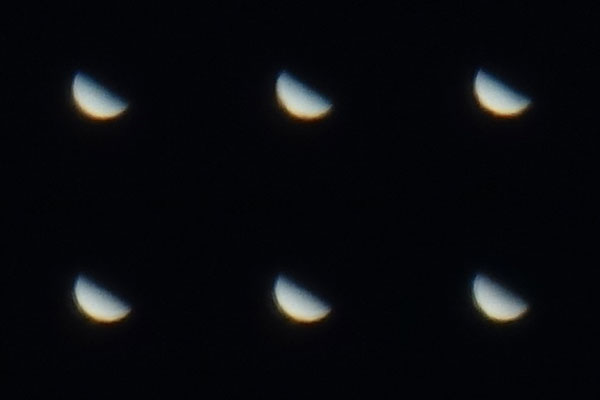 |
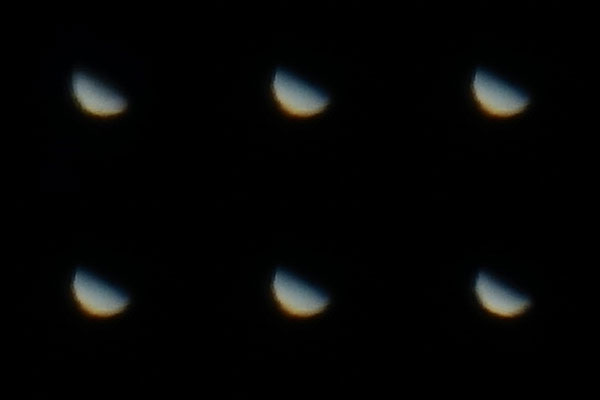 |
|
At the beginning, the sky was still fairly bright, and the Venus stood high in the sky. |
Later the sky was darker, but Venus stood still quite high in the sky. |
Half Venus taken with SM-127 and RX100 M4 - see page Venus Crescent 2020
March 26, 2020: Crescent Moon and Venus
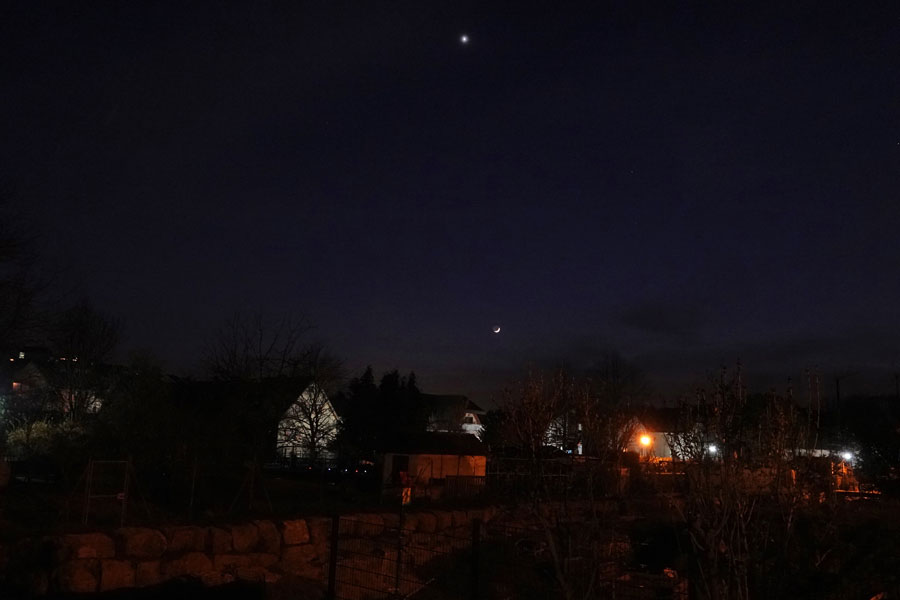 |
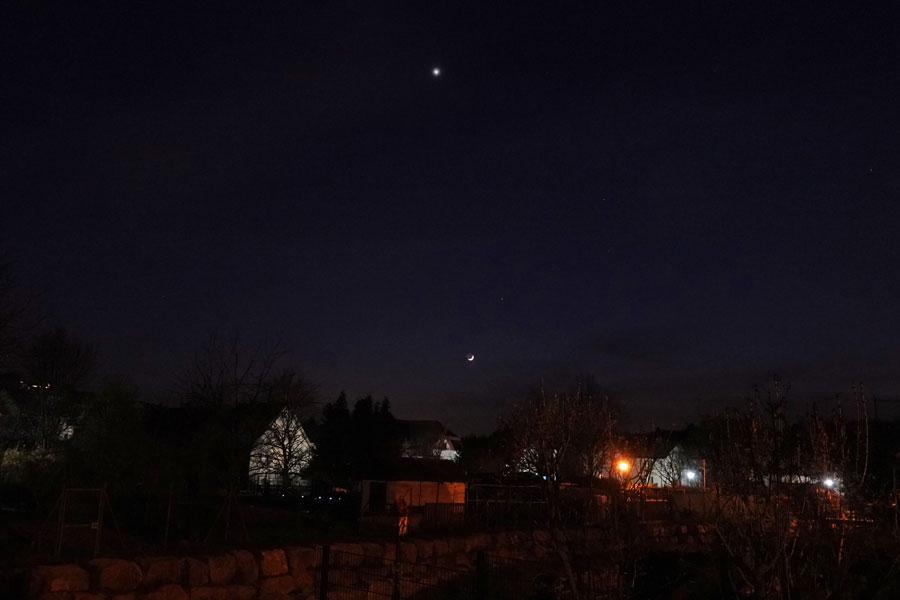 |
|
Venus and crescent moon (RX10 M4) - 4500 pixels |
Ditto - 4500 pixels |
March 27, 2020: Crescent Moon and Venus
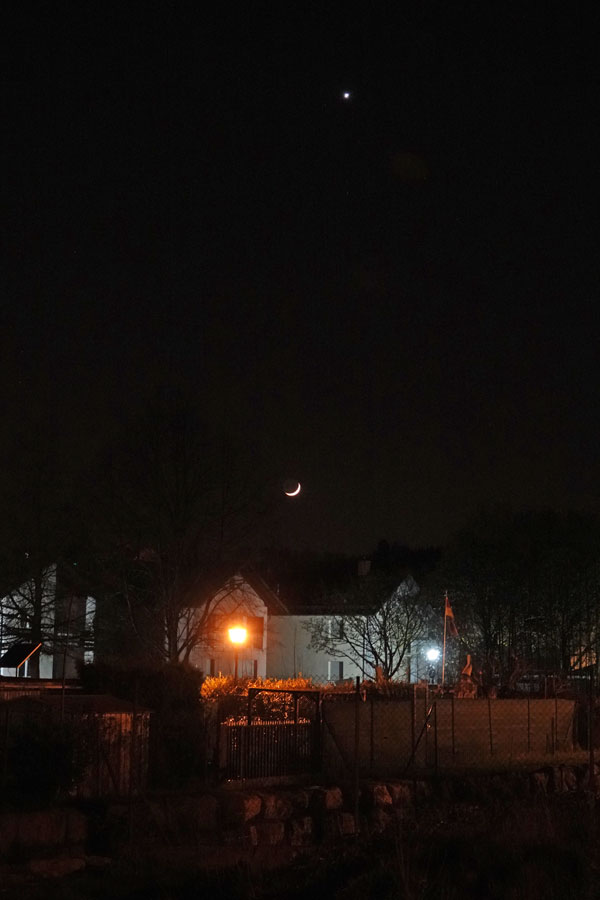 |
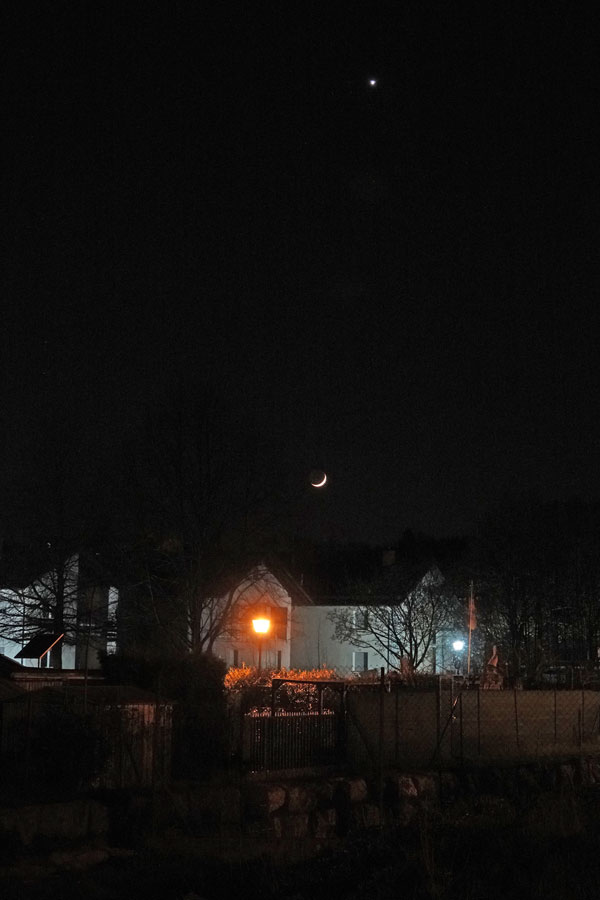 |
|
Venus and crescent moon (RX10 M4) - 4500 pixels |
Ditto - 4500 pixels |
March 28, 2020: Crescent Moon and Venus
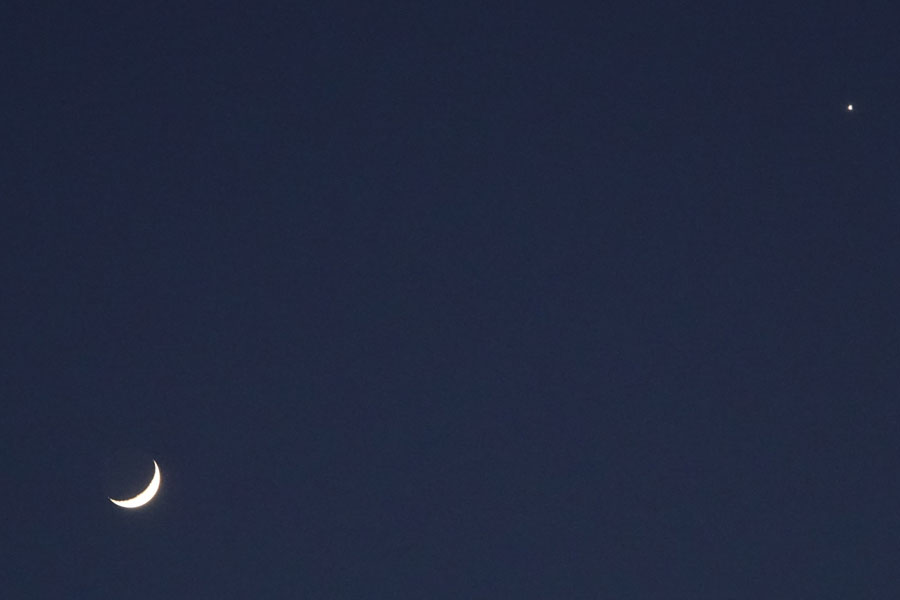 |
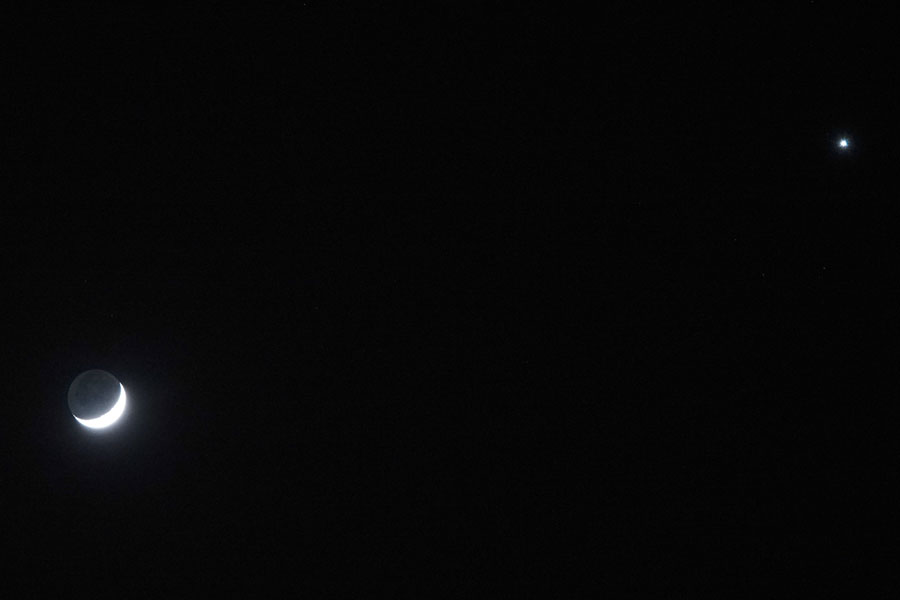 |
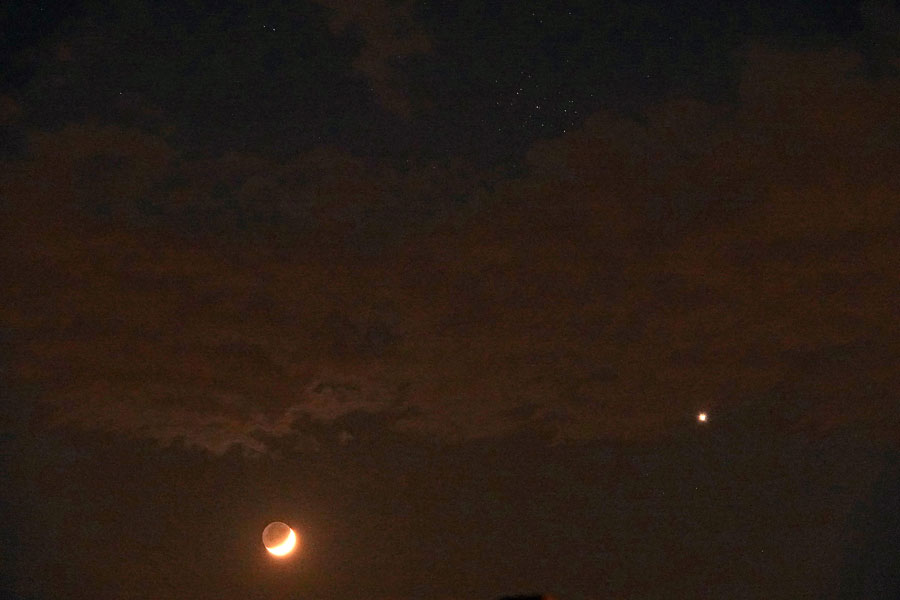 |
||
Venus and crescent moon (RX10 M4) - 3000 pixels |
Ditto - 4200 pixels |
Ditto with Pleiades (faint) - 4500 pixels |
April 3, 2020: Venus in the Pleiades
Venus shortly before setting in the Pleiades (RX10 M4) - 3000 pixels - see page Venus Crescent 2020
April 4, 2020: Venus above the Plejades, Half-Venus
 |
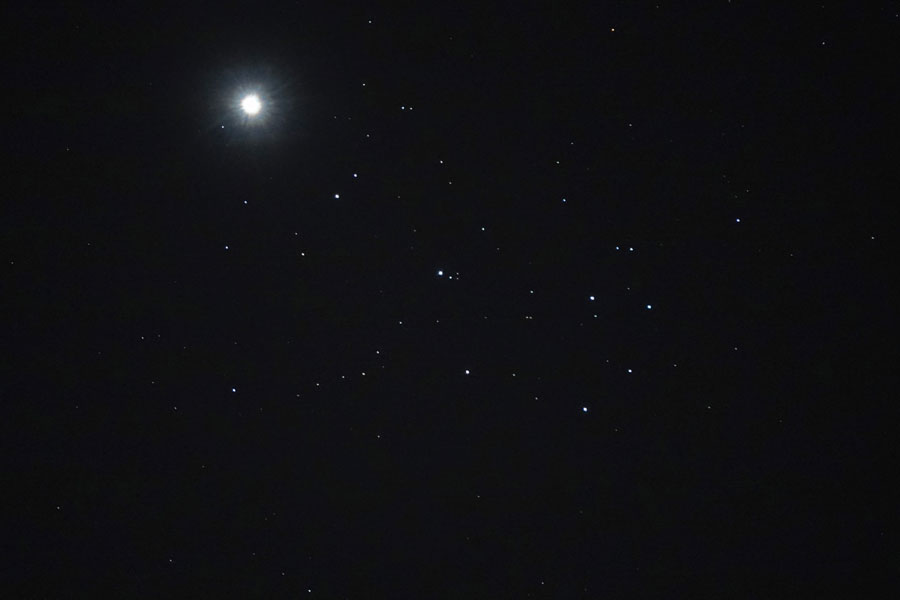 |
|
Venus on top of the Pleiades (RX10 M4) |
Venus on top of the Pleiades (RX10 M4) |
|
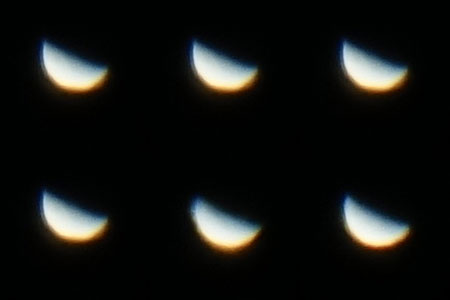 |
See page Venus Crescent 2020 | |
Half Venus taken with SM-127 and RX100 M4 |
April 3-6, 2020: Photos of the Moon with Skymax-127 in Comparison... (Golden Handle on April 3)
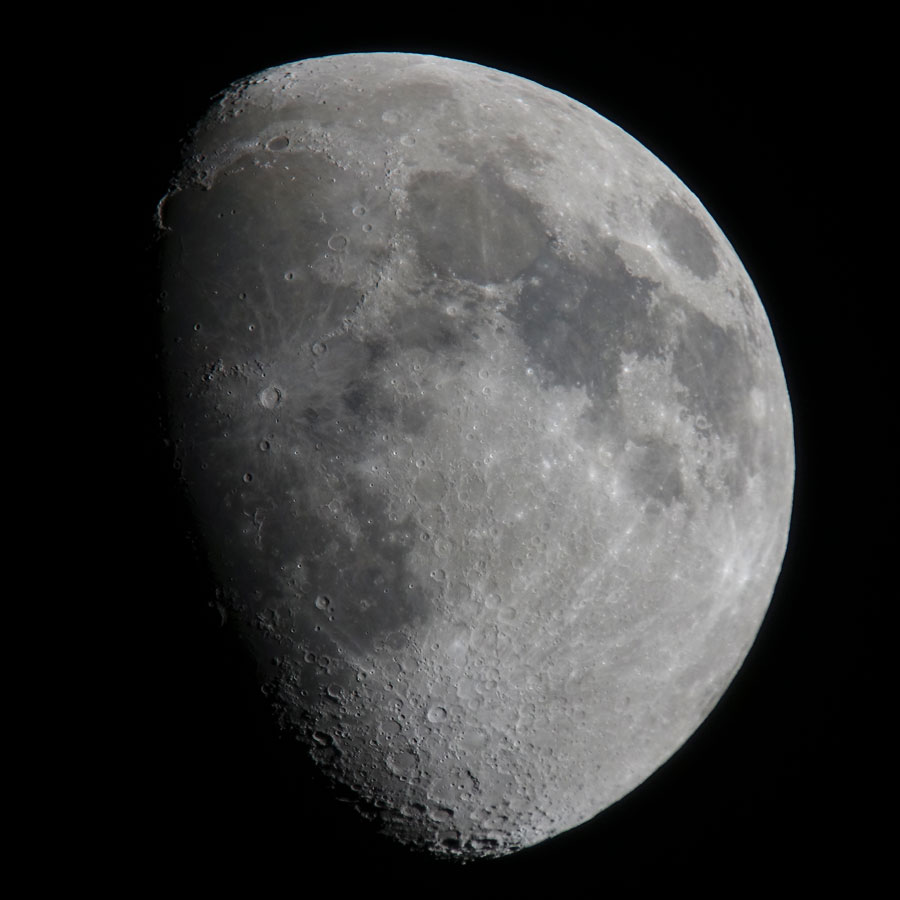 |
 |
|
April 3, 2020: The moon with Golden Handle when the clouds took a break... (RX100 M4*) - 3000 pixels (the smalles craters that I found have a diameter of 7-8 km) |
April 4, 2020: The moon (RX100 M4*) - 3000 pixels |
|
 |
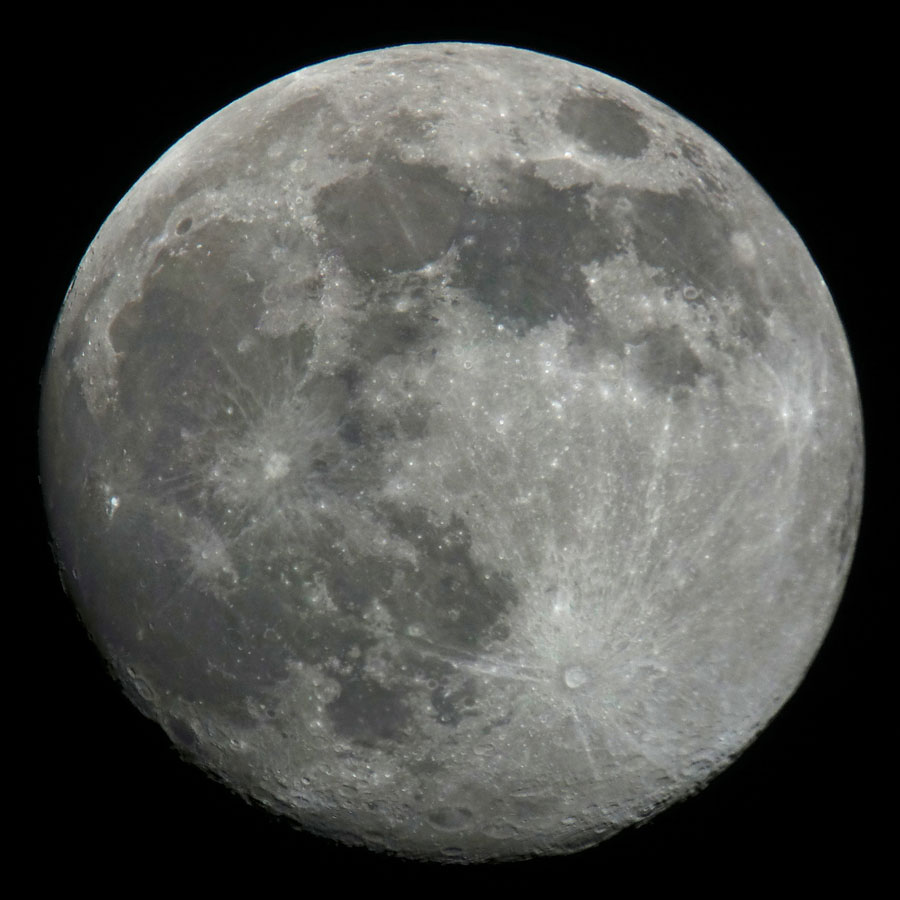 |
|
April 5, 2020: The moon (RX100 M4**) - 3000 pixels |
April 6, 2020: The nearly full moon (RX100 M4***) - 3000 pixels |
*) M mode with f/4, 1/200 sec, ISO 125; manual focus at infinity, focused with the telescope focuser; focal length 35 mm (equivalent); **) M mode with f/4, 1/400 sec, ISO 125; the remaining data is identical; ***) M mode with f/4, 1/1000 sec, ISO 125; the remaining data is identical
See page Photos of the Moon - April/May 2020; the telescope used was my Skymax-127
April 15, 2020: Moon close to Jupiter, Saturn, and Mars, which are Arranged nearly on a Straight Line
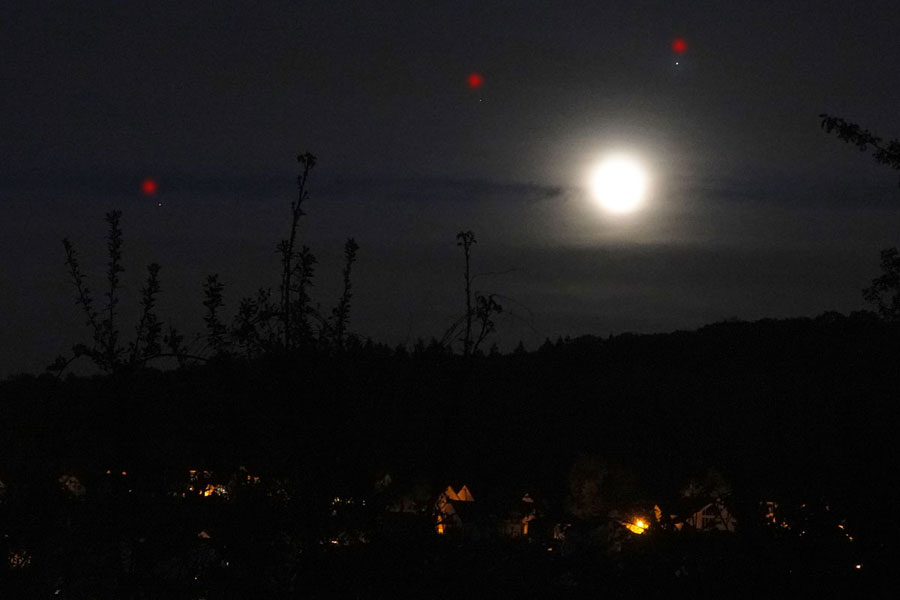 |
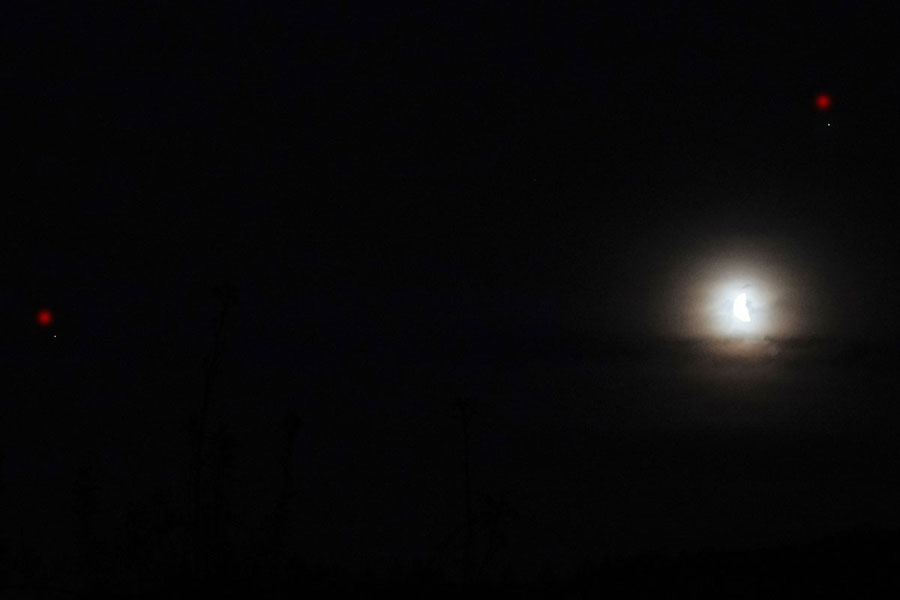 |
|
Moon with Mars, Saturn, and Jupiter (from left to right), which are arranged nearly on a straight line (RX10 M4) - 3600 pixels |
Half moon with Mars and Jupiter; strongly underexposed to show the half moon - 3900 pixels |
April 23, 2020: Crescent of the Venus
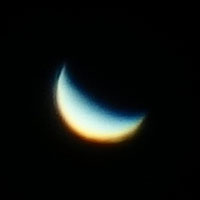 |
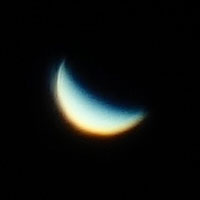 |
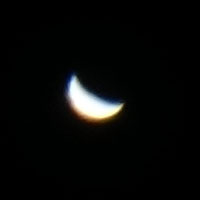 |
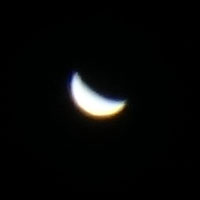 |
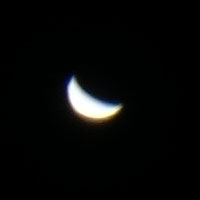 |
Crescent of the Venus taken with C8 and RX100 M4 - see page Venus Crescent 2020
April 25-28, 2020: Crescent of the Moon and Venus
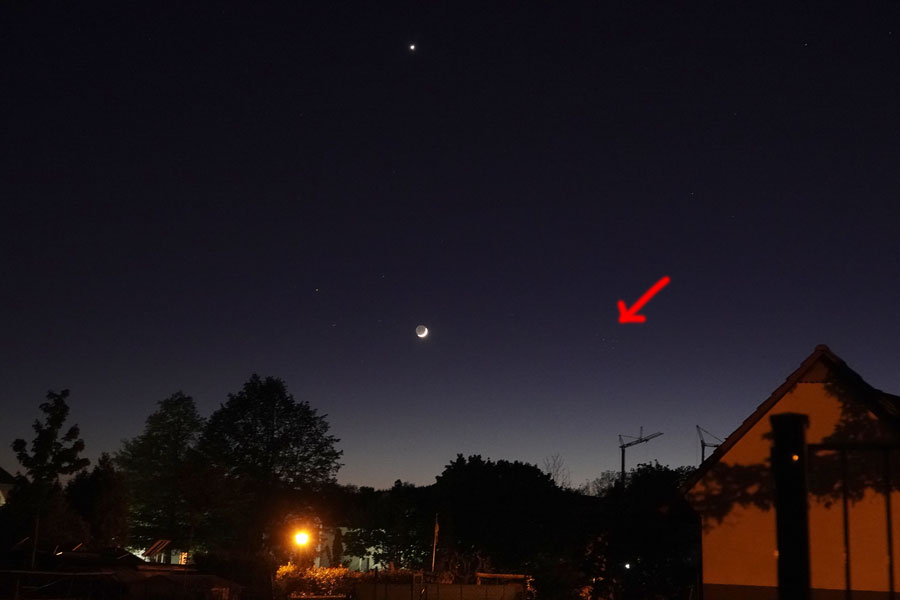 |
 |
|
Apr 25, 2020 - the arrow points to the Pleiades |
Apr 25, 2020 |
|
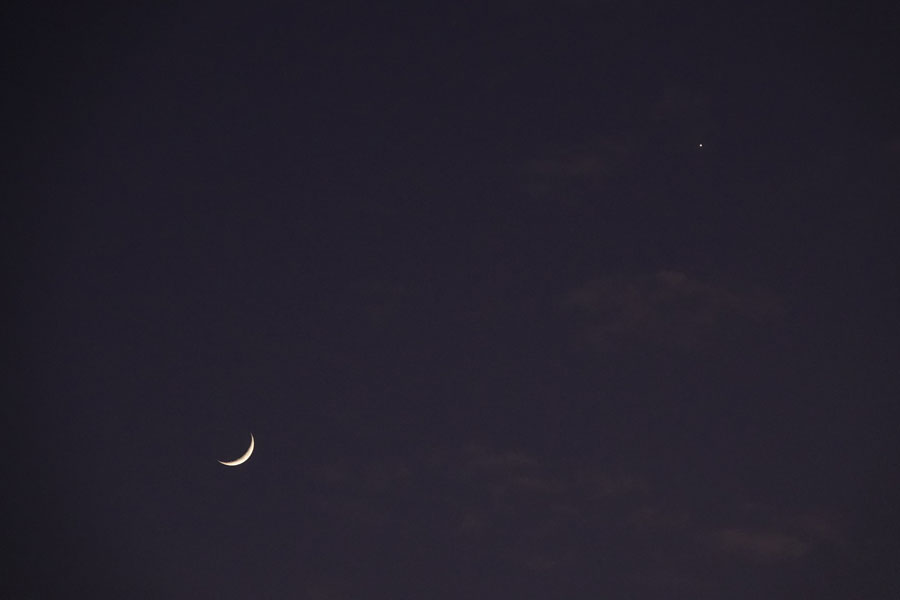 |
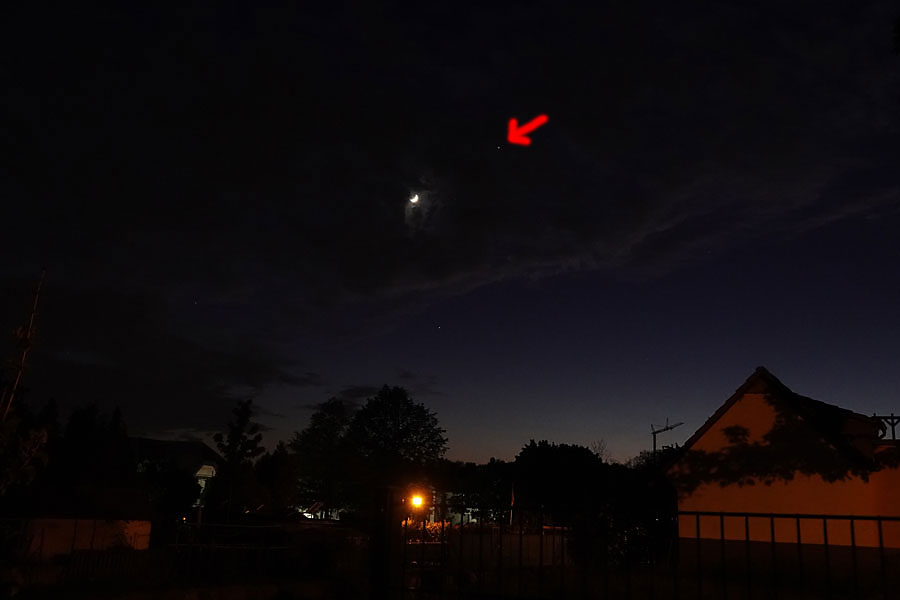 |
|
Apr 26, 2020 |
Apr 26, 2020 - the arrow points to Venus |
|
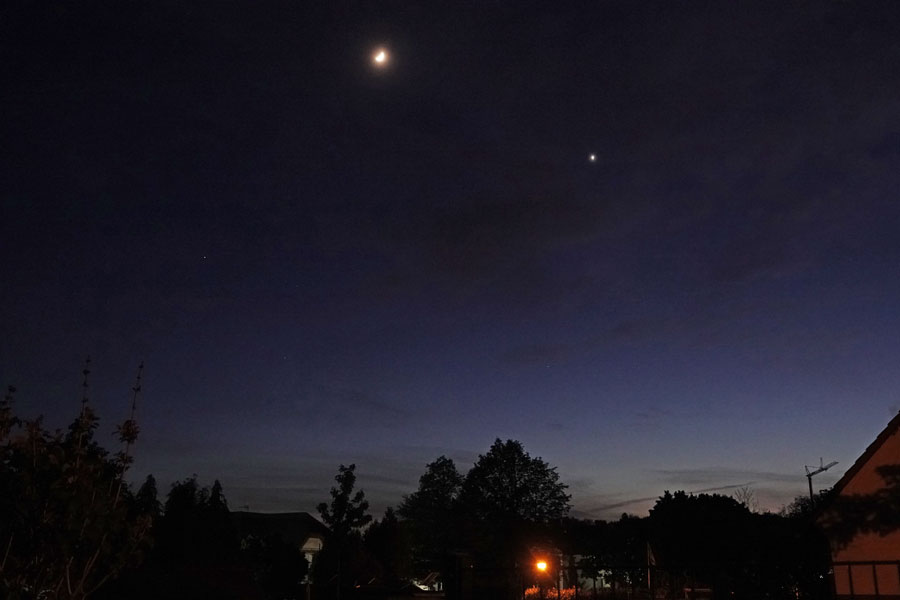 |
 |
|
Apr 27, 2020 |
Apr 27, 2020 |
|
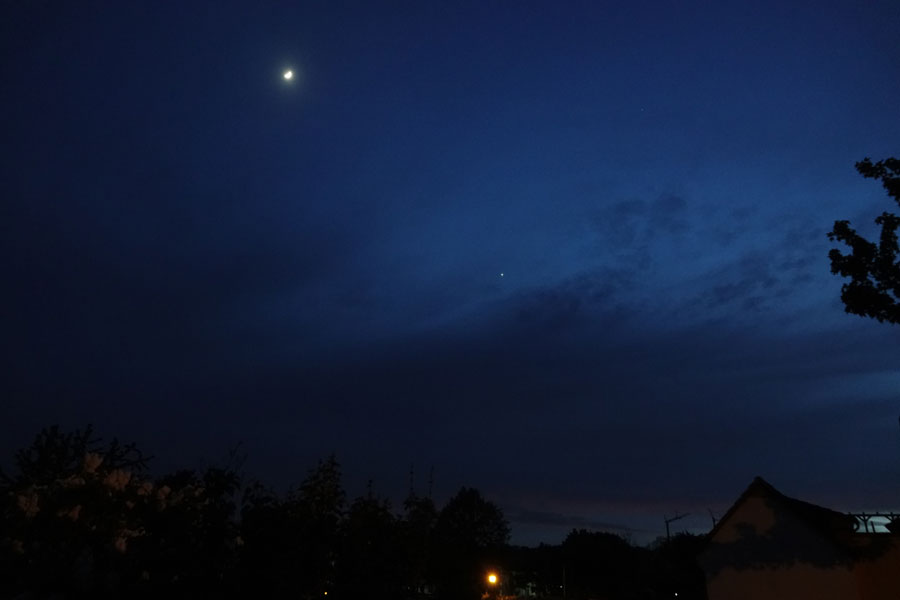 |
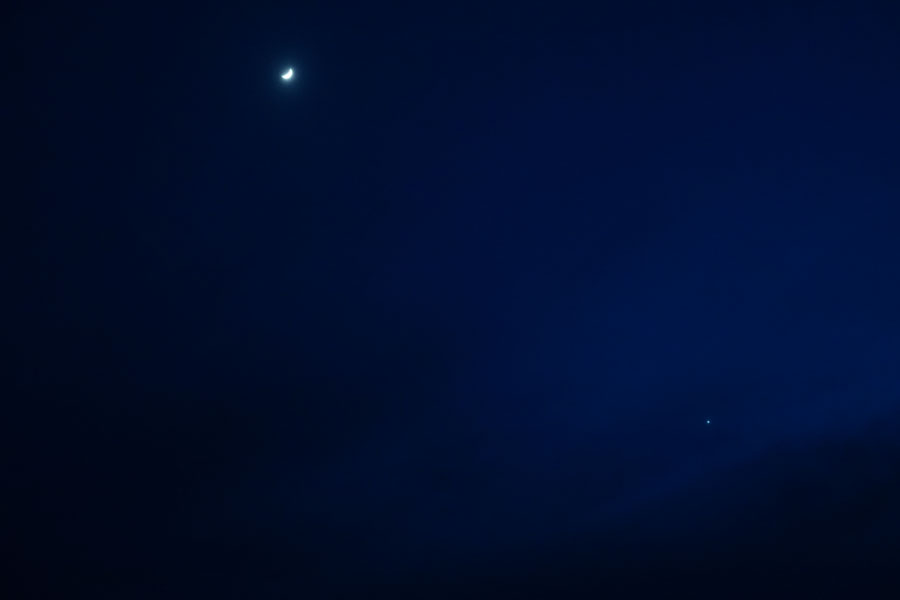 |
|
Apr 28, 2020 |
Apr 28, 2020 |
Crescent of the Moon and Venus taken with RX10 M4
April 27, 2020: Crescent of the Venus
 |
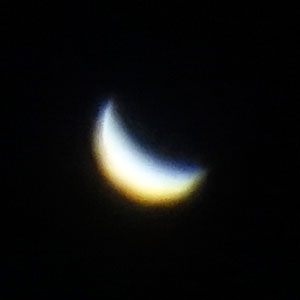 |
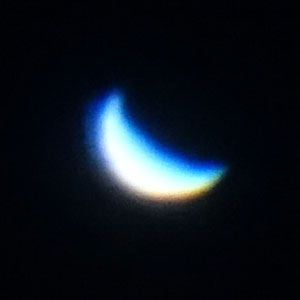 |
Crescent of the Venus taken with Skymax-127 and RX100 M4 - see page Venus Crescent 2020
April 27, 2020: Crescent of the Moon
 |
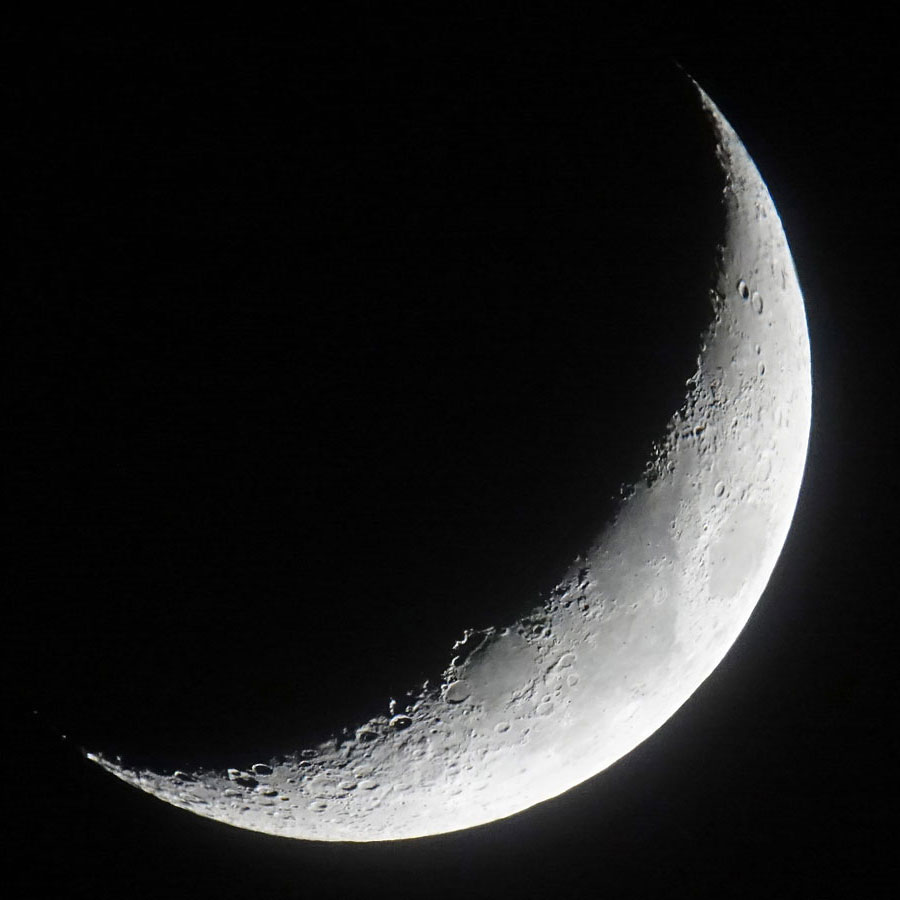 |
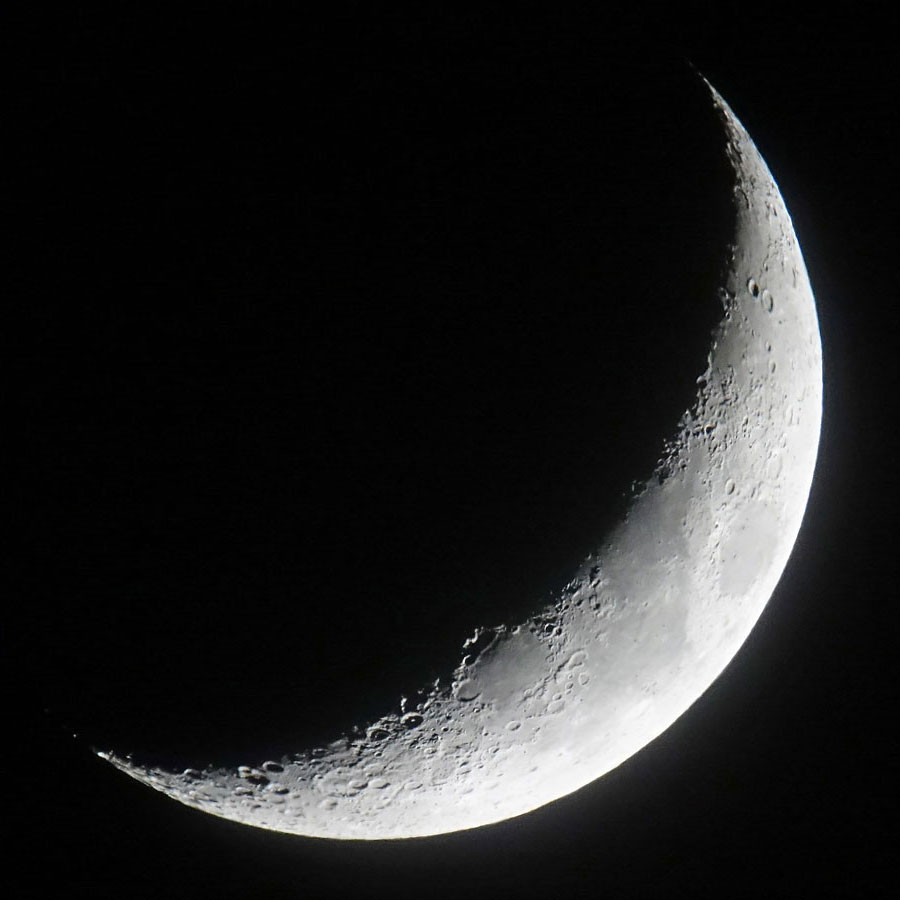 |
||
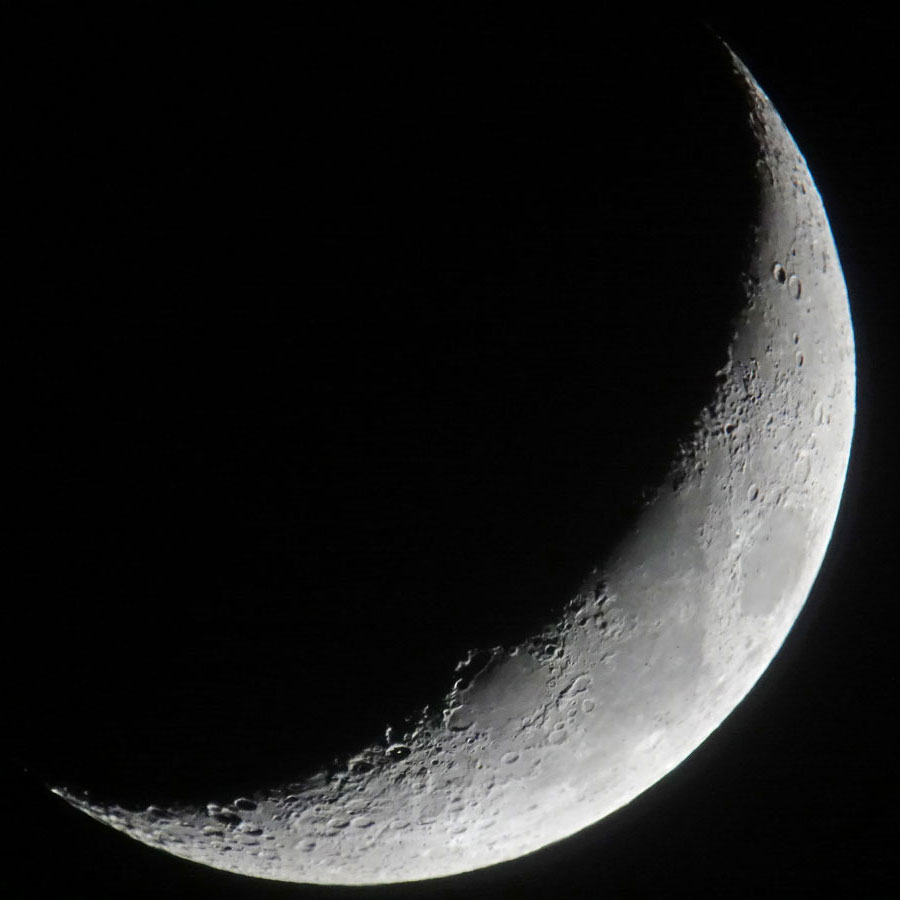 |
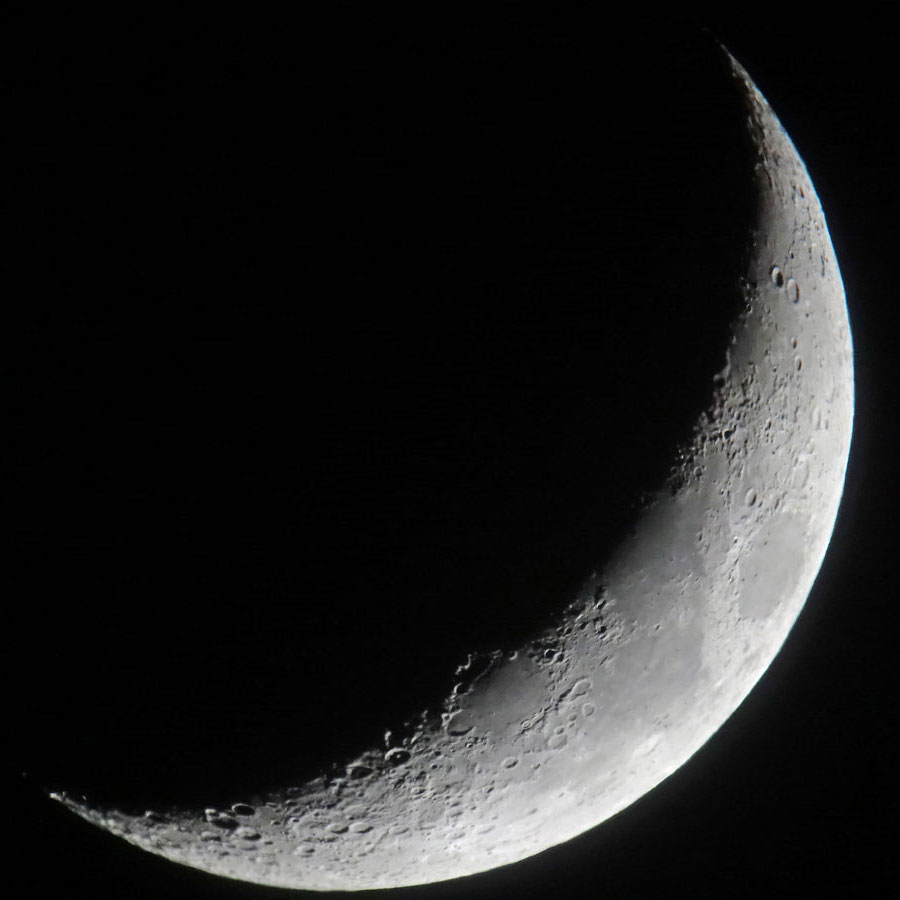 |
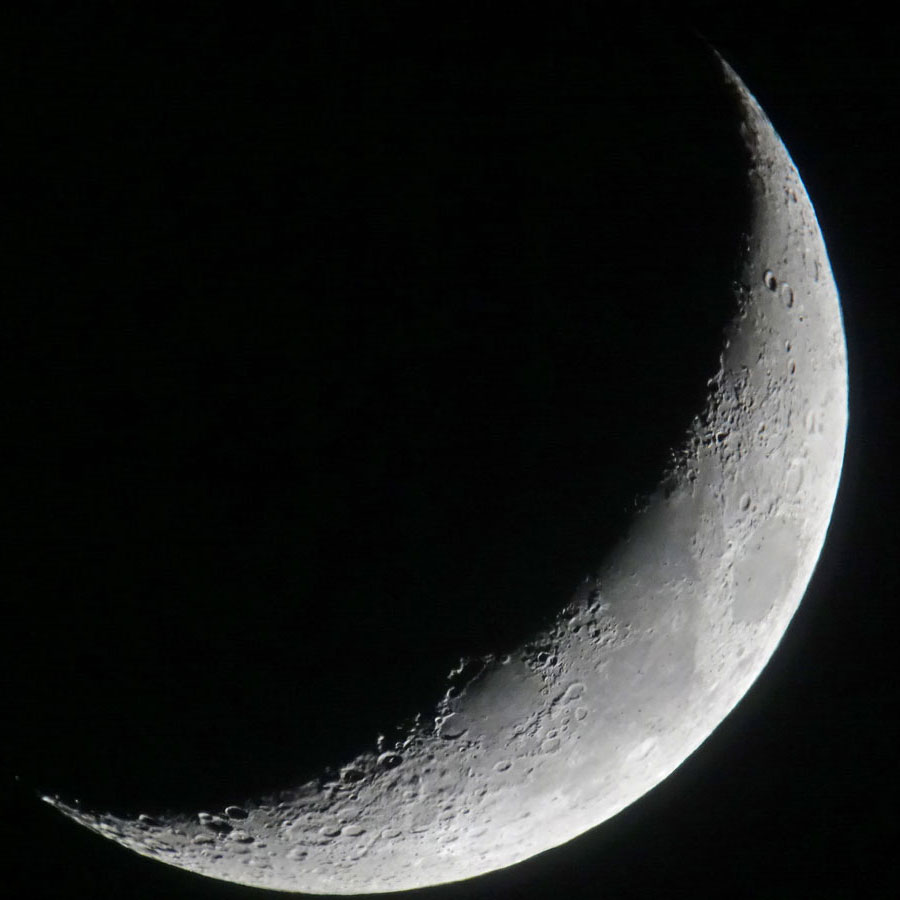 |
||
Crescent of the moon taken with Skymax-127 and RX100 M4 - collage (2700 pixels) - see page Photos of the Moon - April/May 2020
May 5, 2020: Crescent of the Venus and Nearly Full Moon
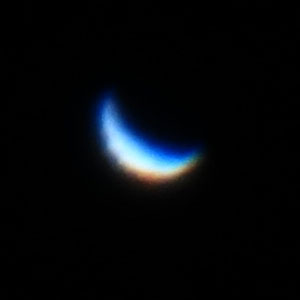 |
 |
 |
Crescent of the Venus taken with Skymax-127 and RX100 M4 - see page Venus Crescent 2020
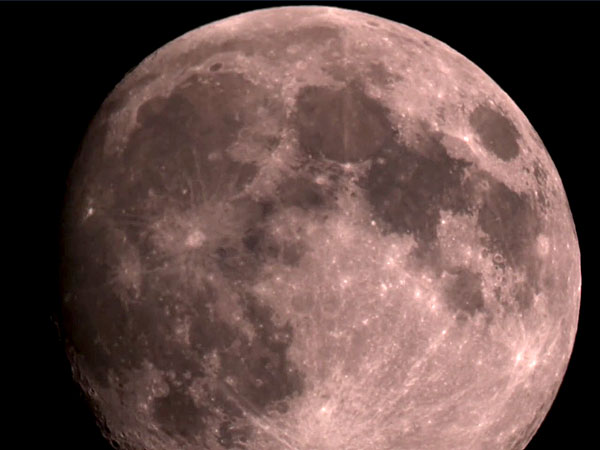 |
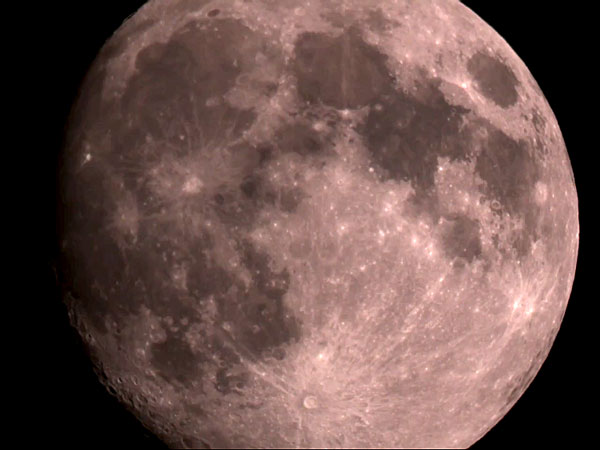 |
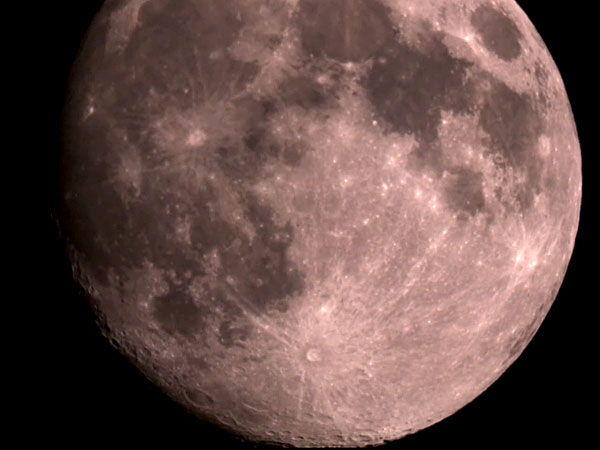 |
||
Nearly full moon photographed with the eVscope (tracking mode) - see page Photos of the Moon - April/May 2020
May 17, 2020: Crescent of the Venus
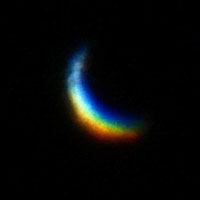 |
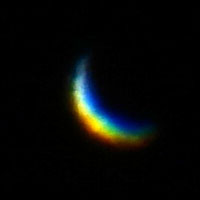 |
Crescent of the Venus taken shortly before setting with Skymax-127 and RX100 M4 - see page Venus Crescent 2020
May 18, 2020: Crescent of the Venus
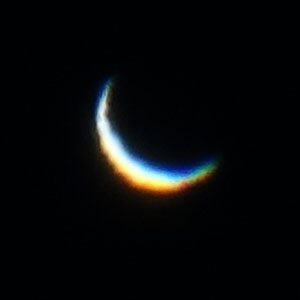 |
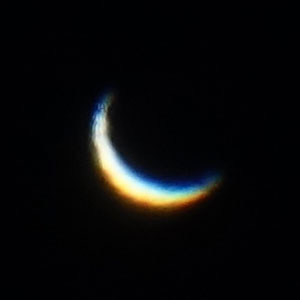 |
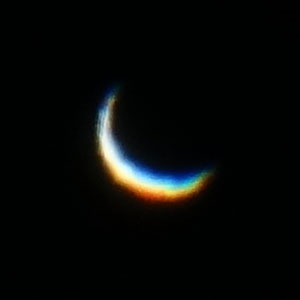 |
Crescent of the Venus taken with Skymax-127 and RX100 M4 - see page Venus Crescent 2020
May 19, 2020: Crescent of the Venus and Mercury
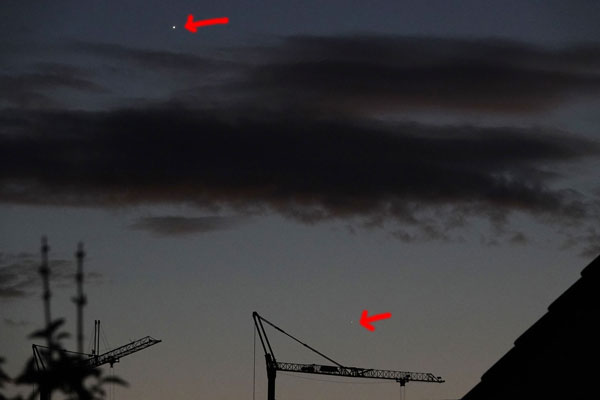 |
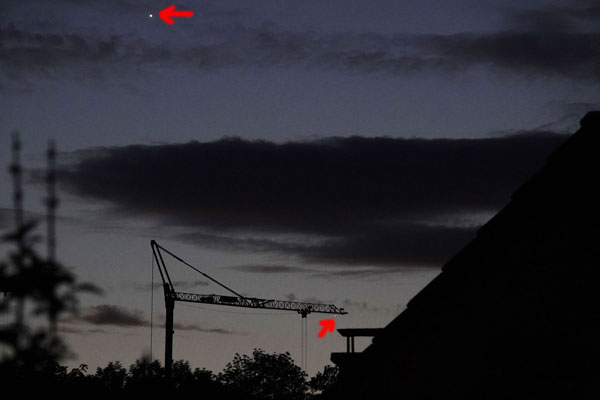 |
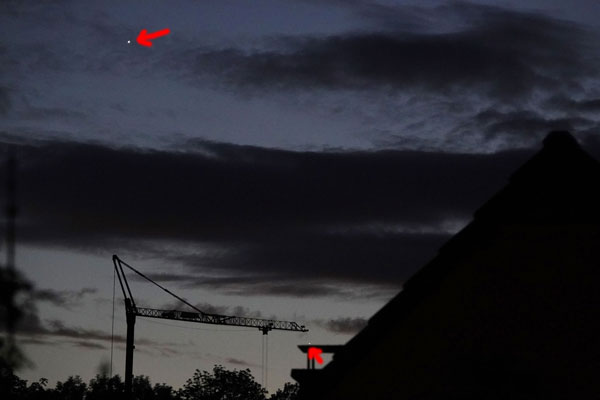 |
Venus and Mercury taken with RX10 M4 - see page Mercury and Venus May 2020
May 20, 2020: Venus and Mercury
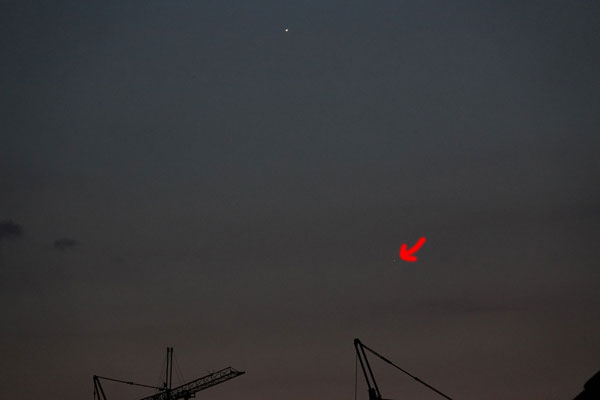 |
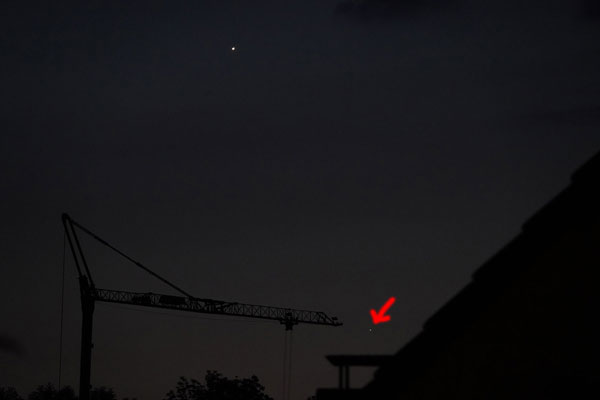 |
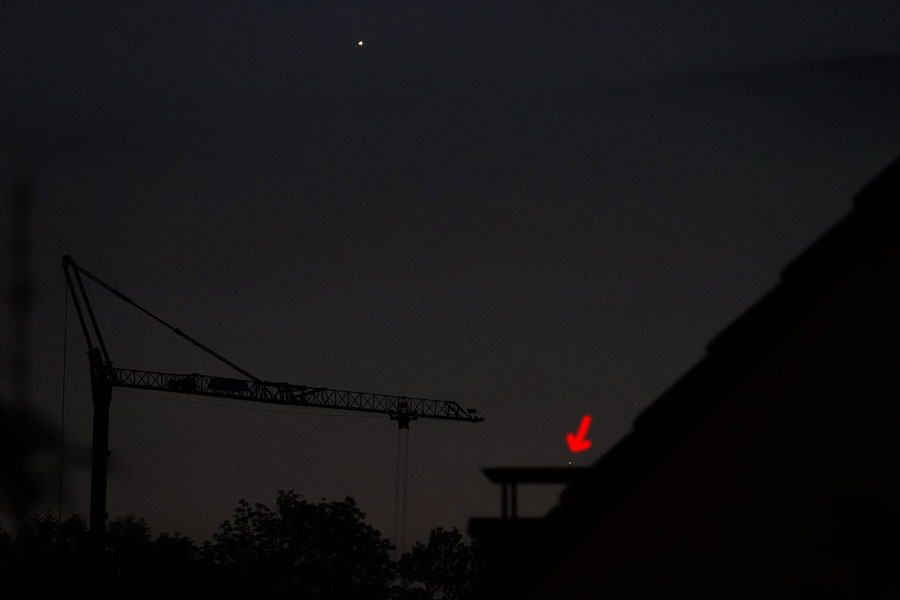 |
Venus and Mercury taken with RX10 M4 - see page Mercury and Venus May 2020
May 21, 2020: Venus and Mercury
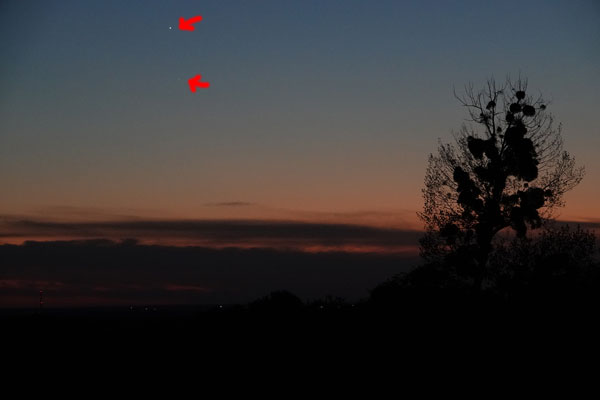 |
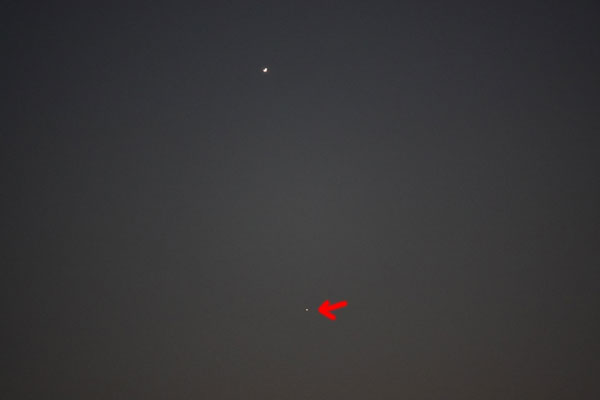 |
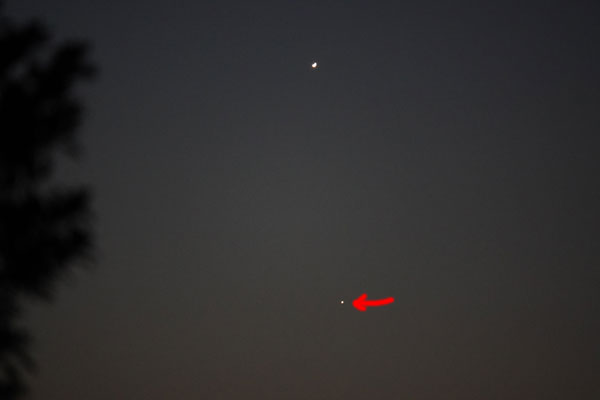 |
Venus and Mercury taken with RX10 M4 - see page Mercury and Venus May 2020
May 23, 2020: Venus Alone (Mercury Hidden behind Clouds)
 |
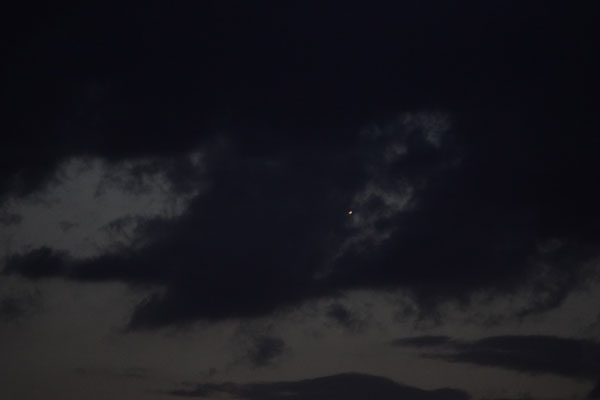 |
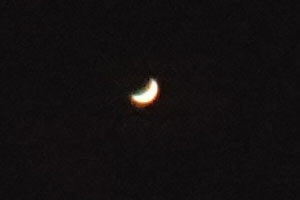 |
Venus taken with RX10 M4 - see page Mercury and Venus May 2020
May 24, 2020: Crescent of the Moon and Venus/Mercury
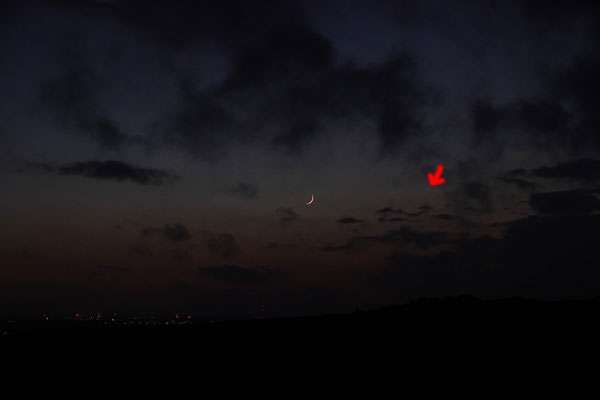 |
 |
 |
||
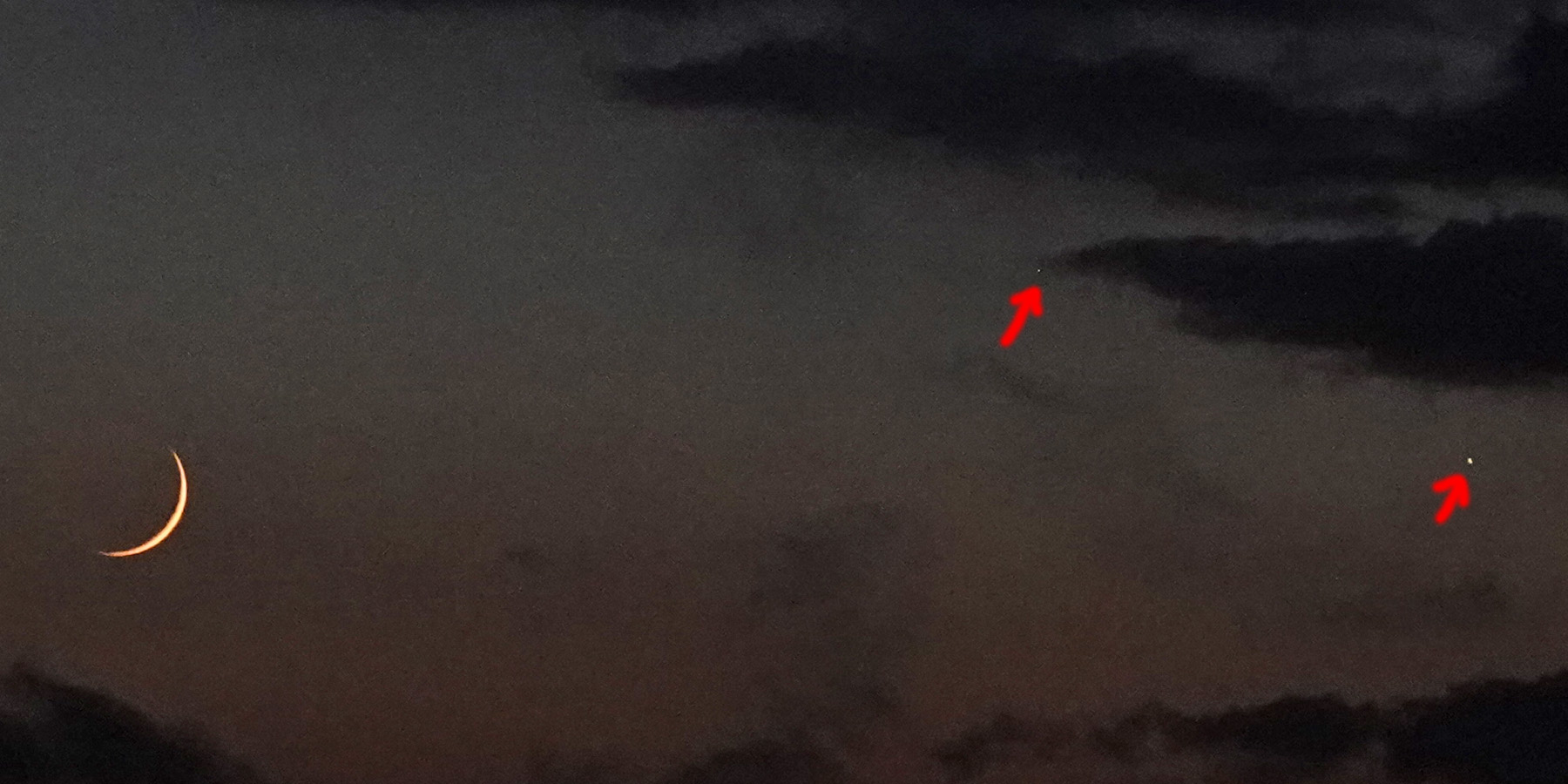 |
||||
Crescent of the moon and Venus and Mercury/Venus (dubious) taken with RX10 M4 - see page Mercury and Venus May 2020 or Moon and Venus/Planets 2020
August 19, 20 and 25, 2020: Jupiter and Saturn
I observed and photographed Jupiter and Saturn in Live View mode with the eVscope; Saturn was exposed manually.
Jupiter
Saturn
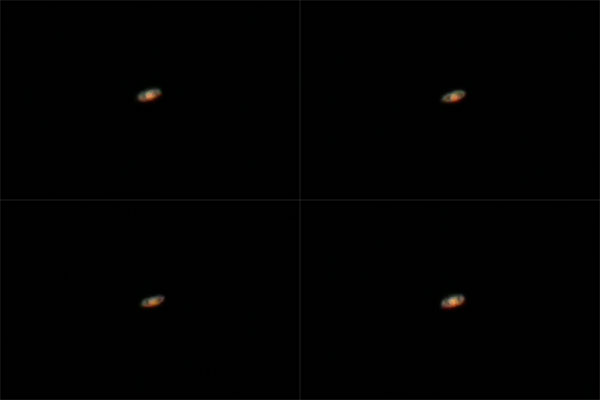 |
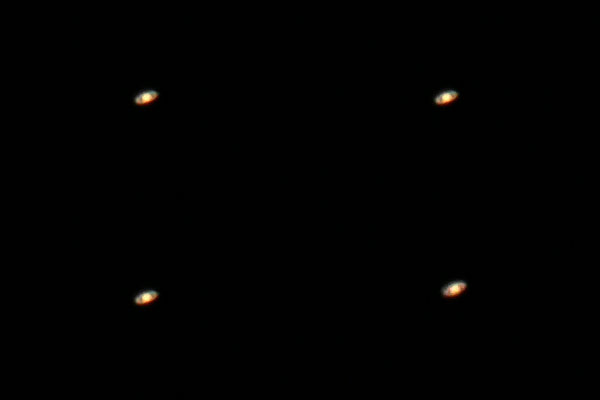 |
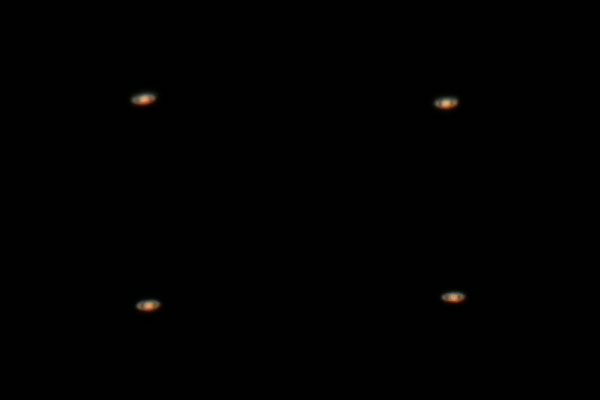 |
||
Saturn - Aug 19, 2020, crops |
Saturn - Aug 20, 2020, crops |
Saturn - Aug 25, 2020, crops |
October 10/19/24, 2020: Mars
I observed and photographed Mars in Live View mode with the eVscope (exposed manually):
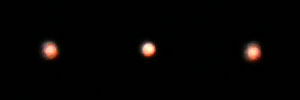 |
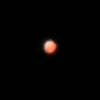 |
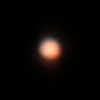 |
||
Mars - Oct 10, 2020, crops |
Oct 19, 2020 |
Oct 24, 2020 |
October 24, 2020: Saturn, Moon
I observed Saturn (no photos of Jupiter and Mars) in Live View mode with the eVscope (exposed manually).
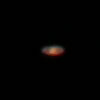 |
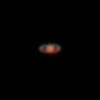 |
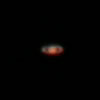 |
||
Saturn - Oct 24, 2020, crops |
||||
About half moon photographed with the eVscope in Live View mode, manual exposure:
See page Photos of the Moon - October/November 2020
October 27, 2020: Jupiter, Saturn, Moon
I observed and photographed Jupiter and Saturn in Live View mode with the eVscope (exposed manually):
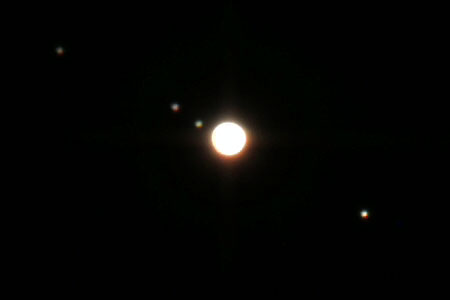 |
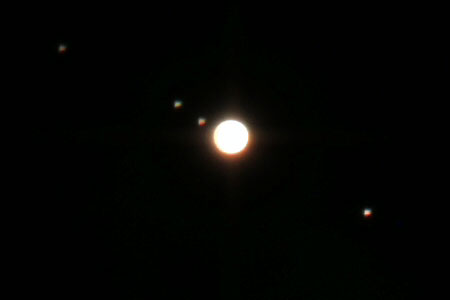 |
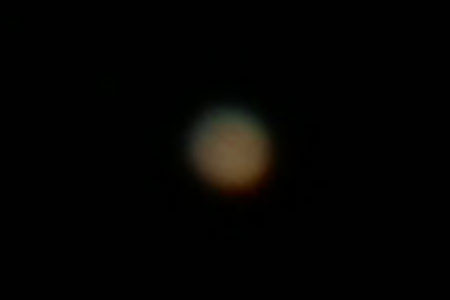 |
||
Jupiter - Oct 27, 2020, crops, with moons |
Ditto, my "best" stripes (400%) |
|||
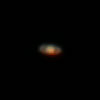 |
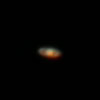 |
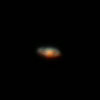 |
||
Saturn - Oct 27, 2020, crops |
||||
Moon photographed with the eVscope in Live View mode, automatic and manual exposure:
Ditto, three samples withour overlay (exposure type unknown):
See page Photos of the Moon - October/November 2020
November 14, 2020: Neptune, Pluto
eVscope
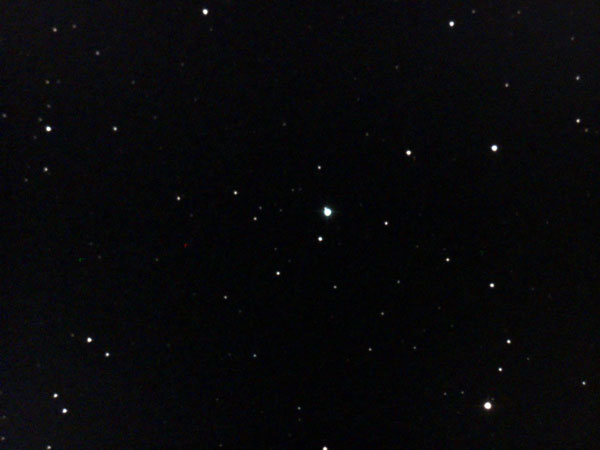 |
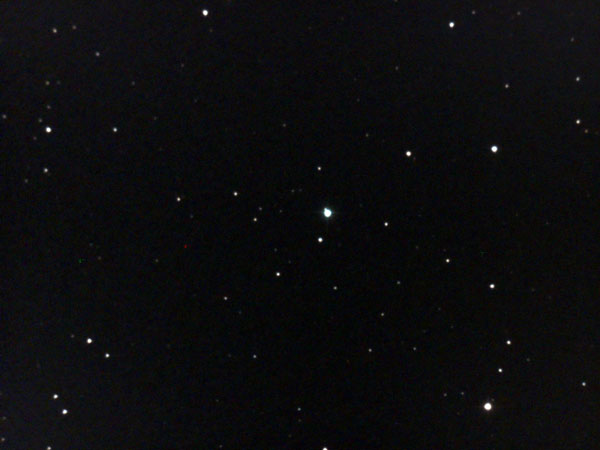 |
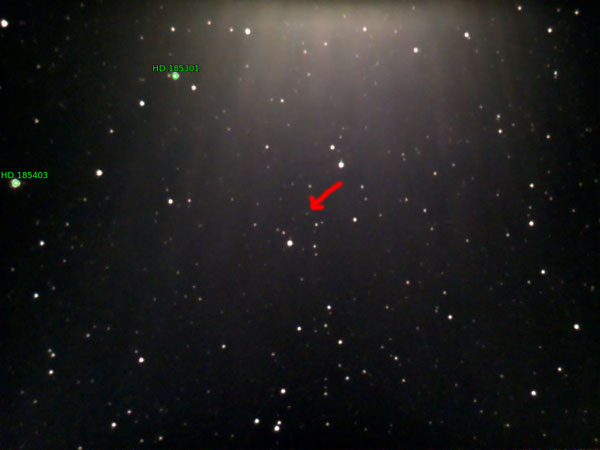 |
||
Neptune - Nov 14, 2020 |
Neptune - Nov 14, 2020 |
Pluto - Nov 14, 2020, marked |
||
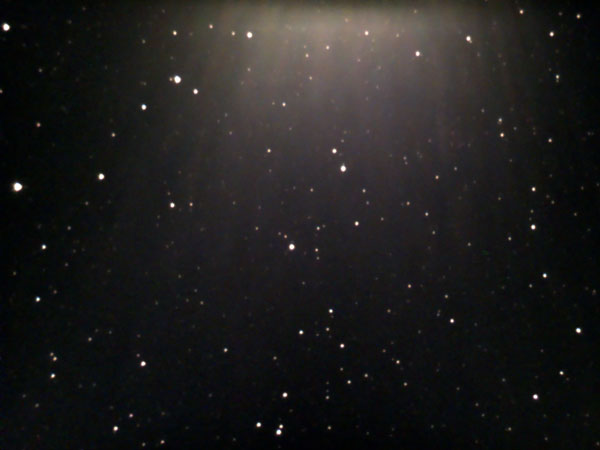 |
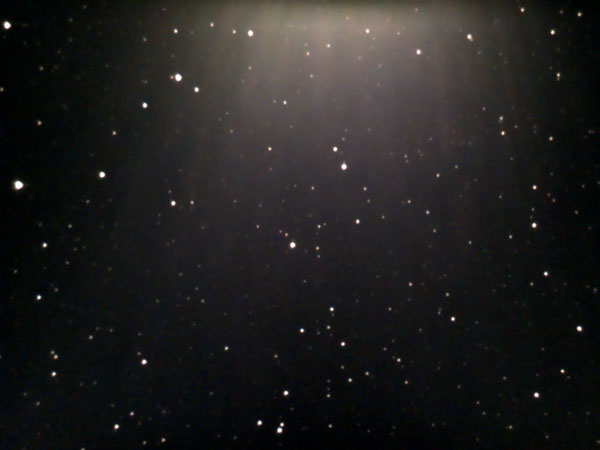 |
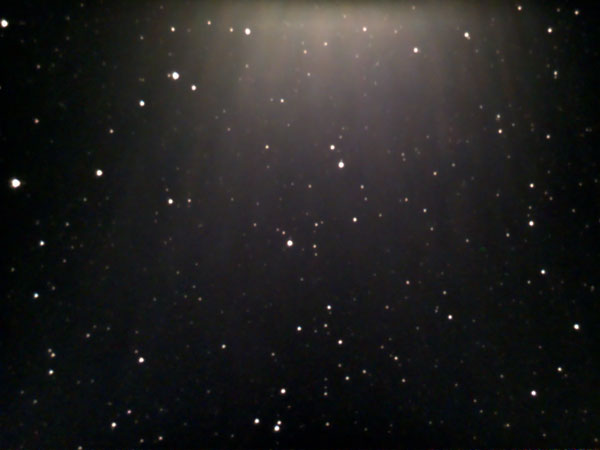 |
||
Pluto - Nov 14, 2020 |
Pluto - Nov 14, 2020 |
Pluto - Nov 14, 2020 |
November 24, 2020: Moon
eVscope
If you look at the large versions, you will see that the automatically exposed photo shows more noise than the two other ones.
See page Photos of the Moon - October/November 2020
Sony RX10 M4
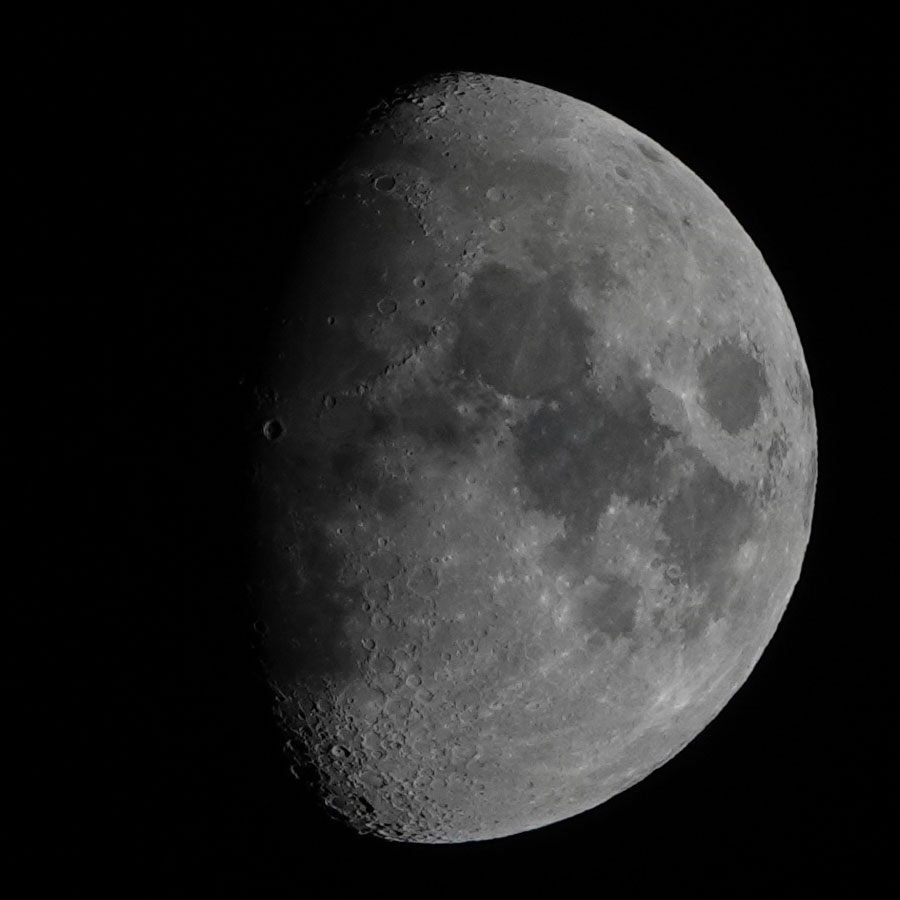 |
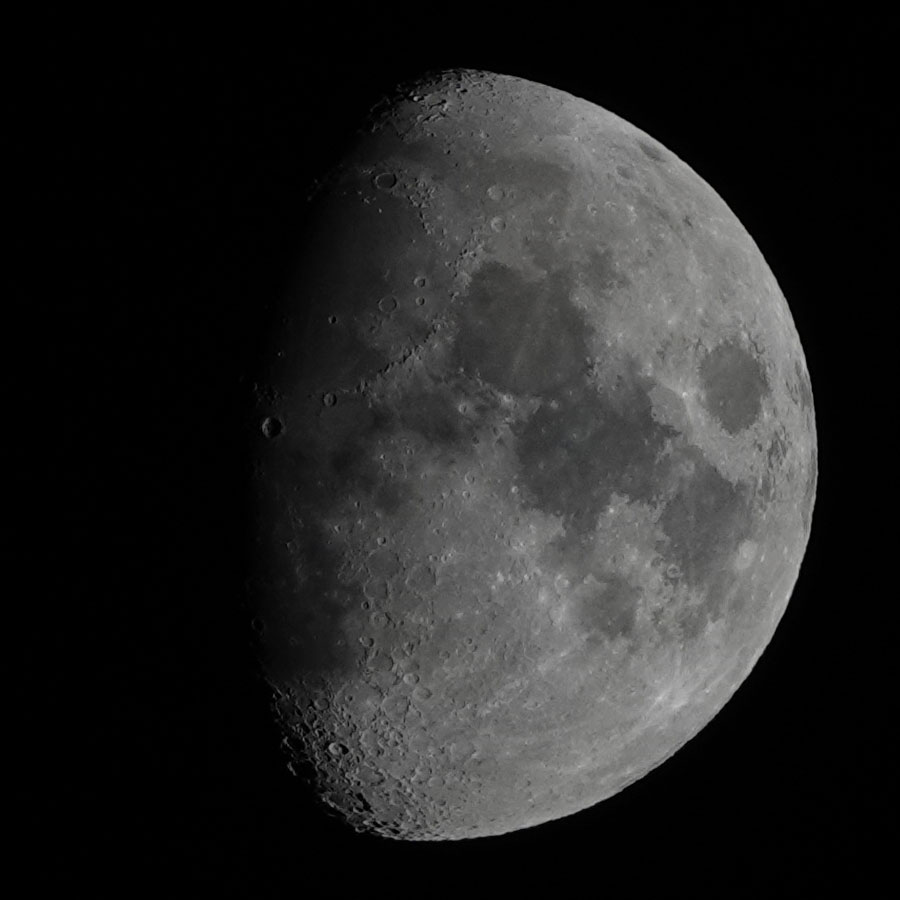 |
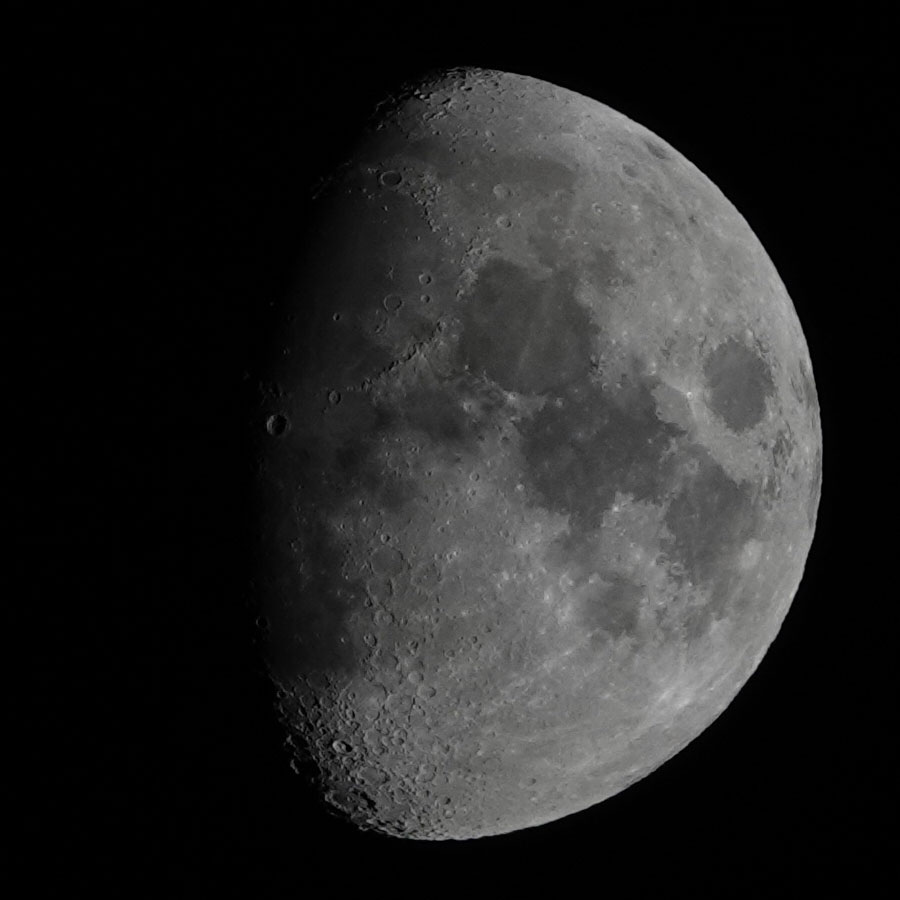 |
||
Moon - Nov 24, 2020 |
Moon - Nov 24, 2020 |
Moon - Nov 24, 2020 |
||
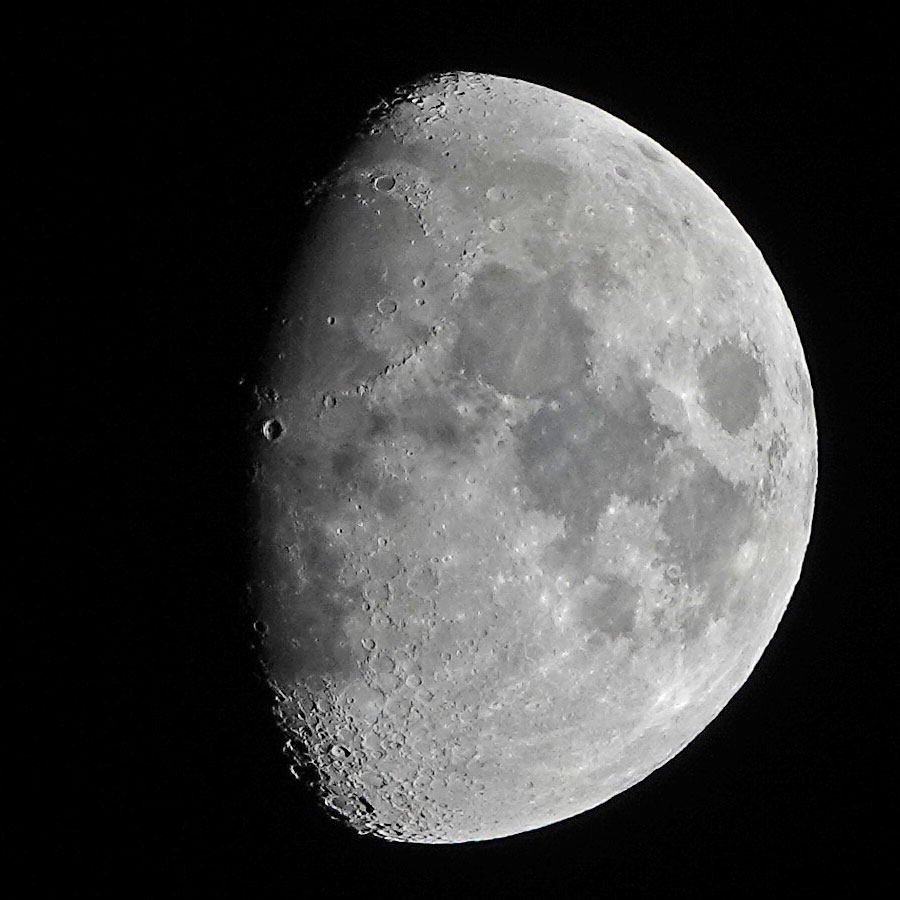 |
 |
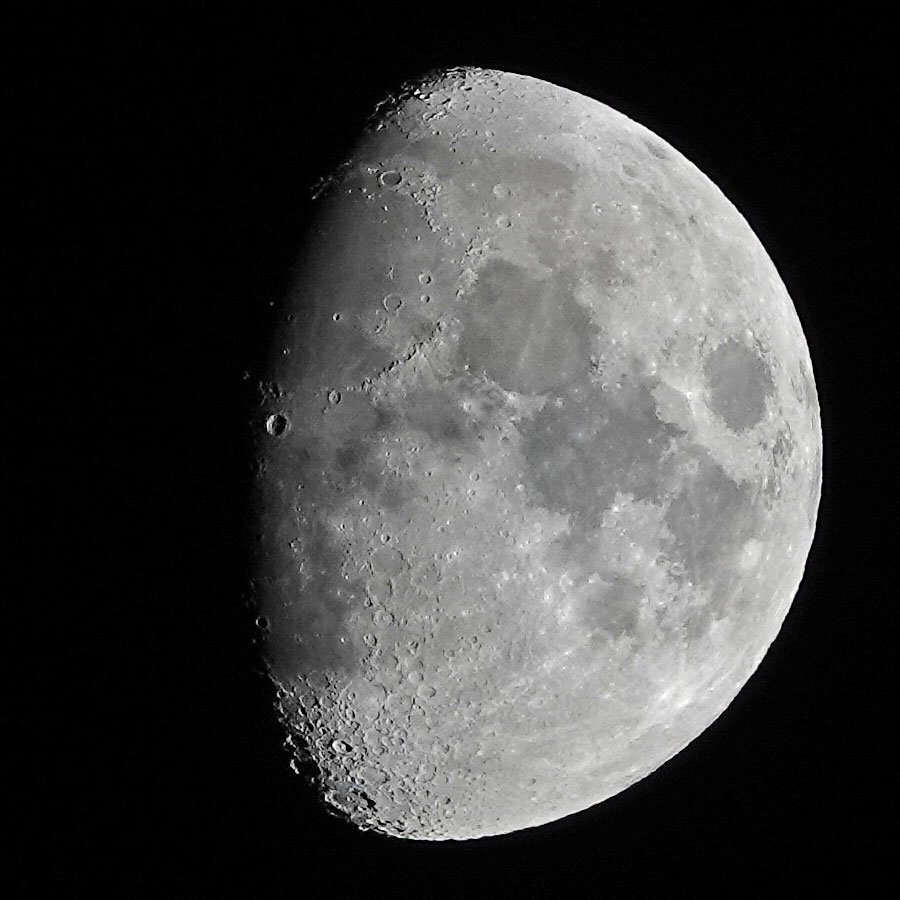 |
||
Moon - Nov 24, 2020, processed and sharpened |
Moon - Nov 24, 2020, processed and sharpened |
Moon - Nov 24, 2020, processed and sharpened |
See page Photos of the Moon - October/November 2020
December 25, 2020: Jupiter and Saturn
Sony RX10 M4
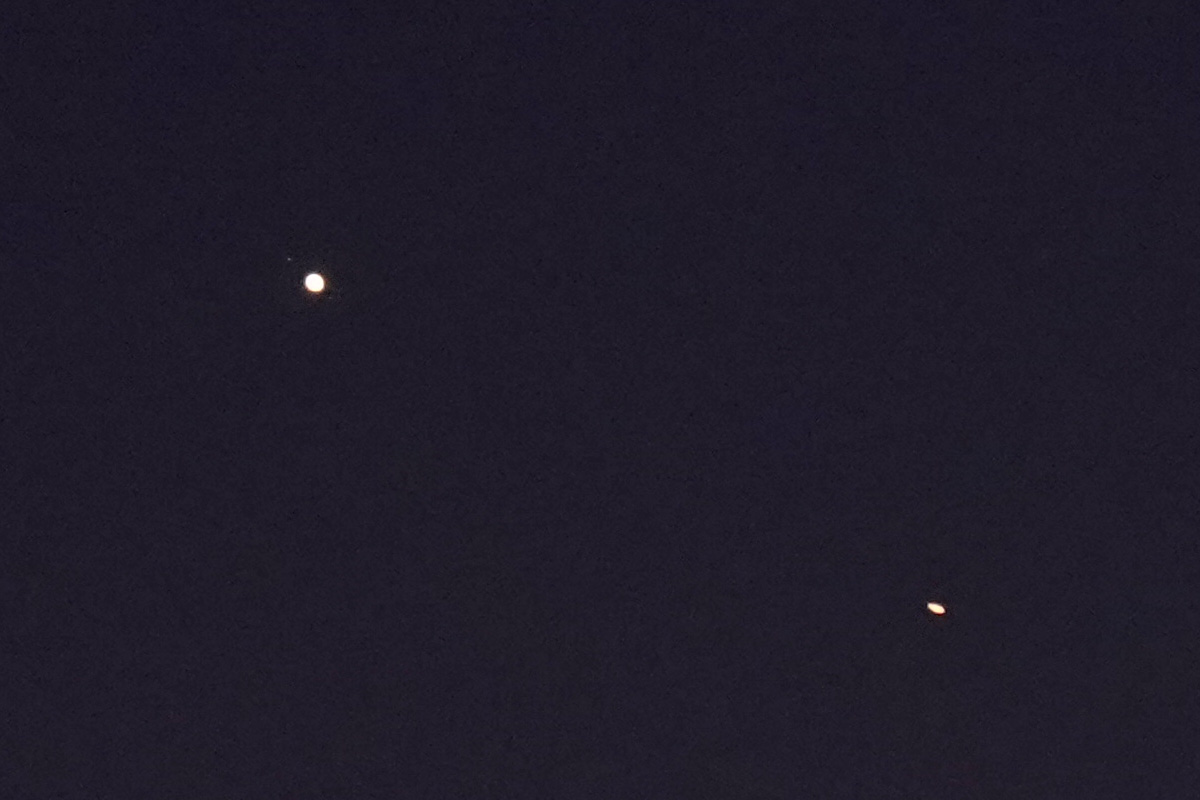 |
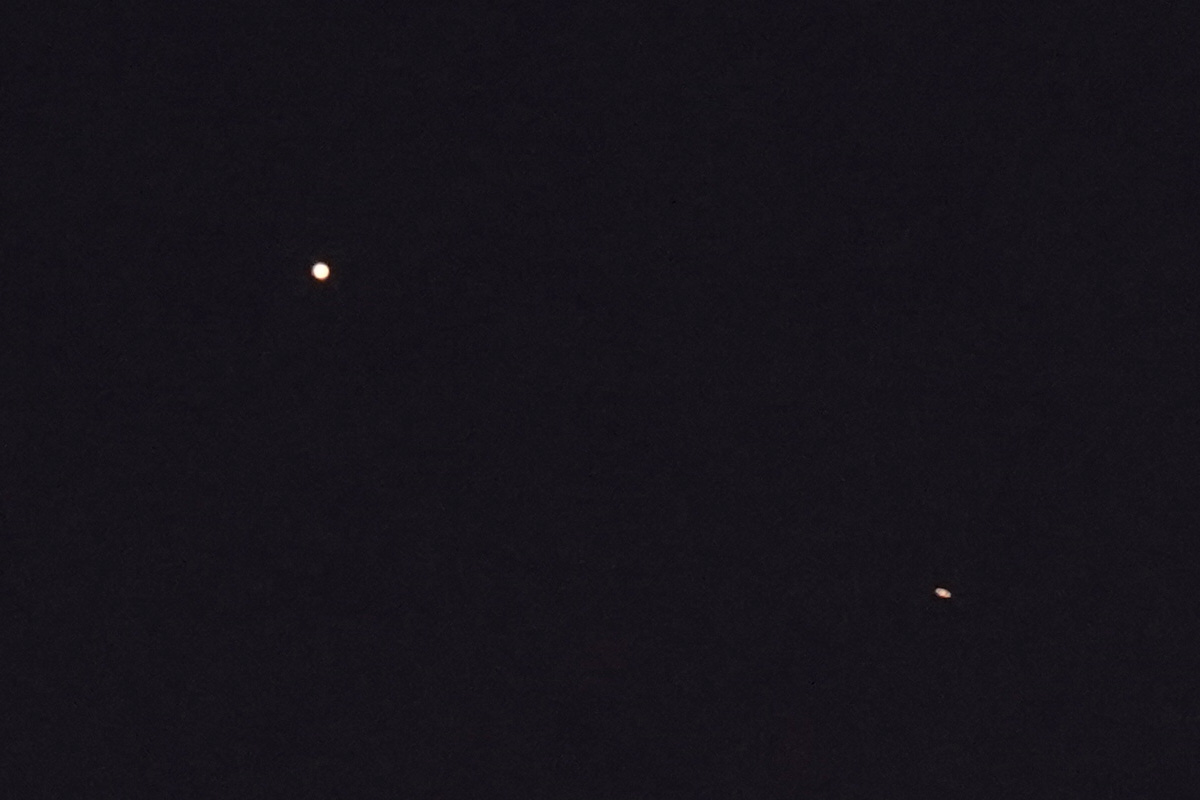 |
Click the photos for details!
Sony RX100 M4 on C5 or Skymax-127
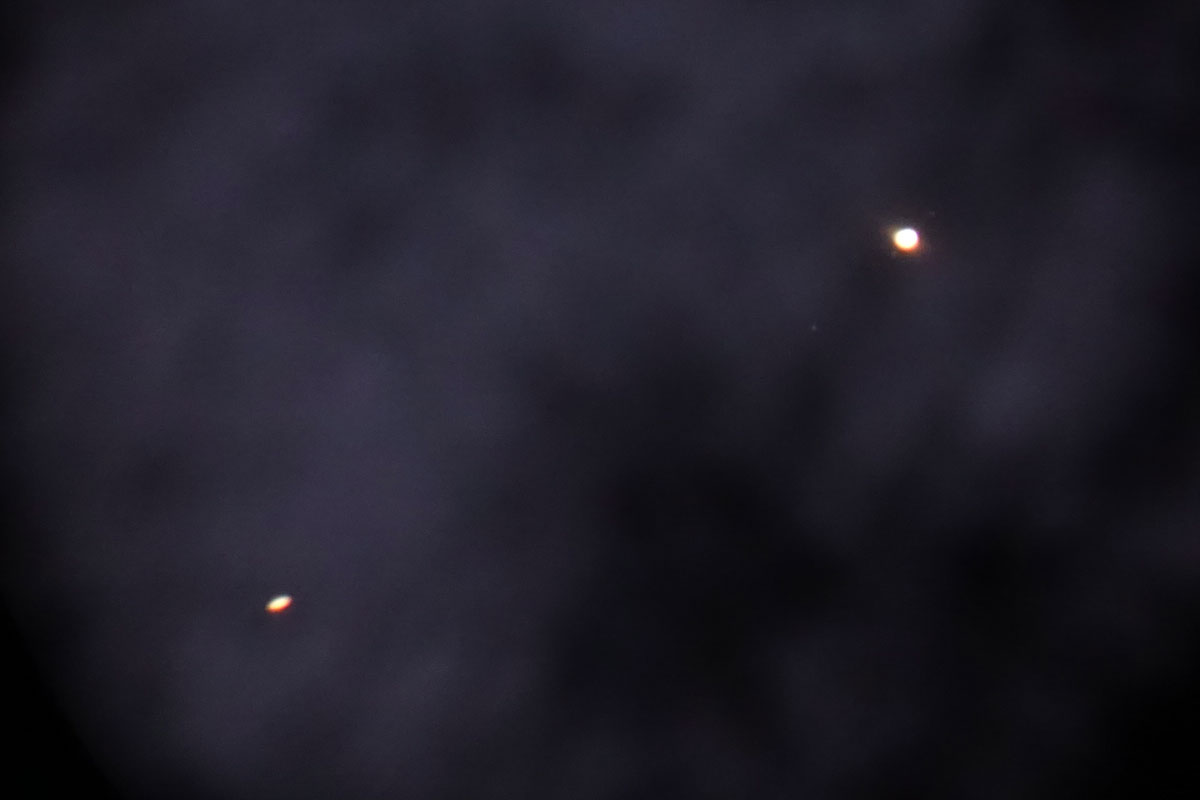 |
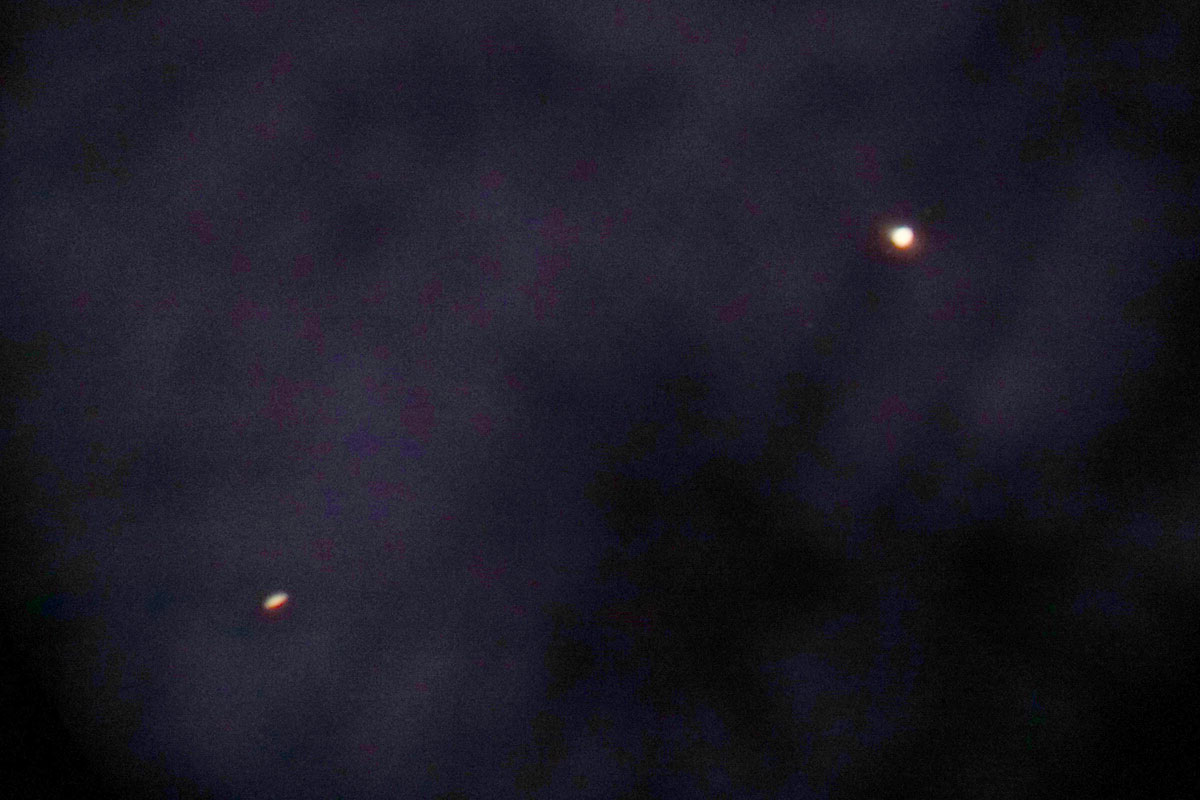 |
|
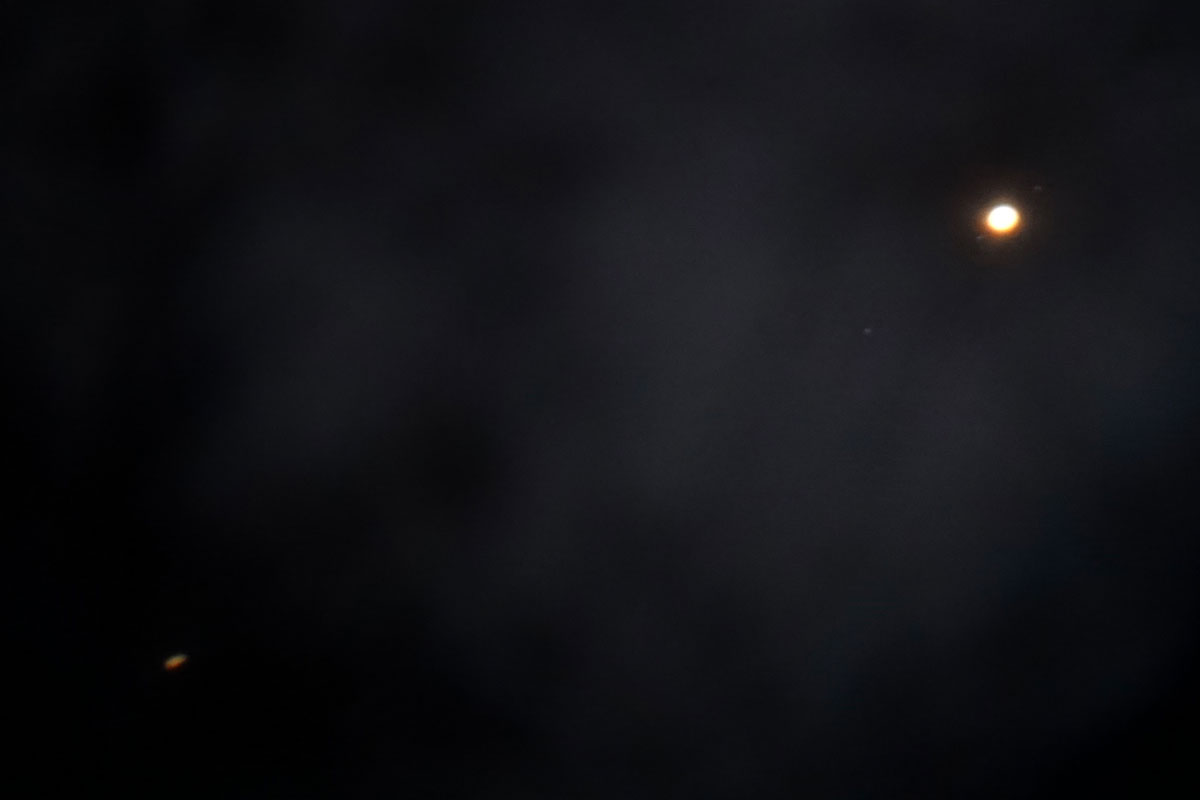 |
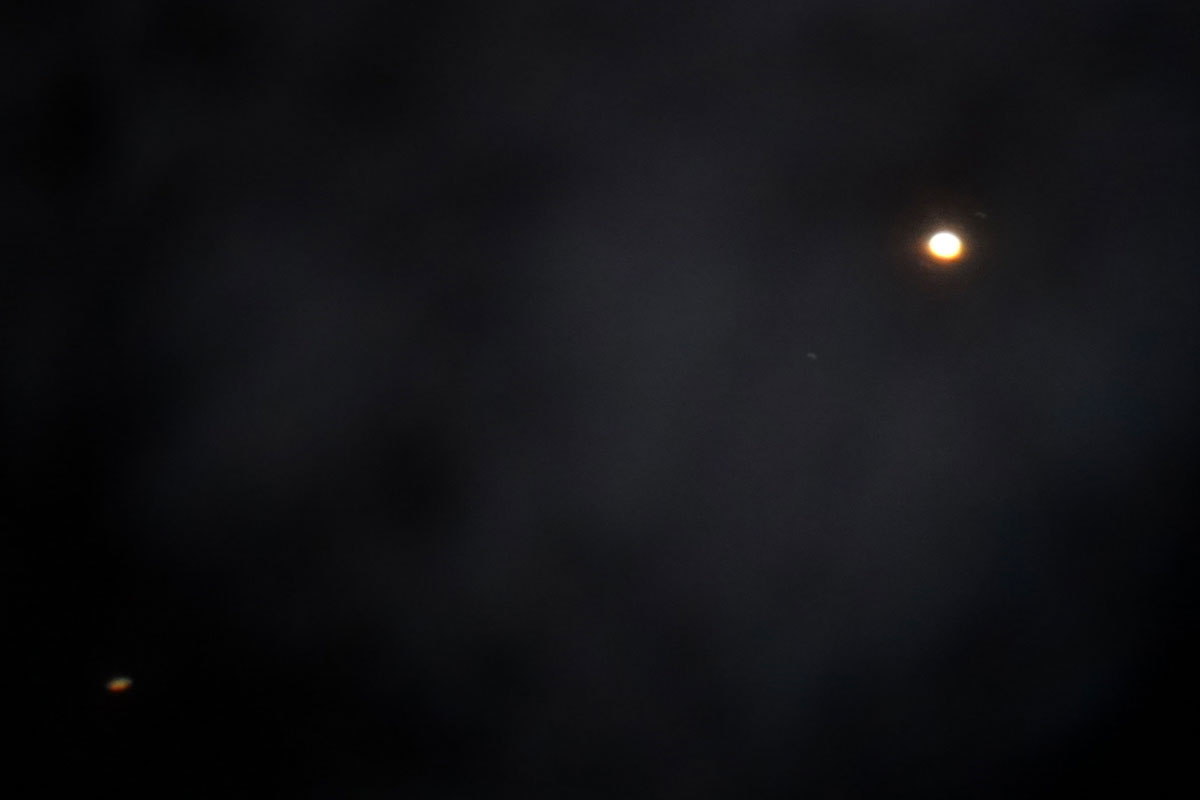 |
Click the photos for details!
References
Links
- Mond (Wikipedia): de.wikipedia.org/wiki/Mond
- Moon (Wikipedia): en.wikipedia.org/wiki/Moon
- Virtual Moon Atlas: ap-i.net/avl/en/start
Books (in German)
- Lambert Spix (2013, 3. Auflage). moonscout - Mondmeere, Krater und Gebirge einfach finden und beobachten. Oculum-Verlag. ISBN 978-3-938469-58-3
- Lambert Spix & Frank Gasparini (2011, 1. Auflage). Der Moonhopper. Oculum-Verlag. ISBN 978-3-938469-54-5
- Ronald Stoyan, Hans-Georg Purucker (2013, 1. Auflage). Reiseatlas Mond. Oculum-Verlag. ISBN 978-3-938469-64-4
- Robin Scagell (2016). 101 Himmelsobjekte, die man gesehen haben muss, Kosmos
Verlag (out of print)
www.kosmos.de/buecher/ratgeber/astronomie/einsteiger/6527/101-himmelsobjekte-die-man-gesehen-haben-muss
On this Website
- Omegon Photography Scope 72/432 ED OTA Information (2.8" Refractor)
- Sky-Watcher Skymax-127 OTA Information (5" Maksutov-Cassegrain)
- Sky-Watcher Explorer 150PDS Information (6" Newton)
- Celestron C8 OTA Information (8" Schmidt-Cassegrain)
- TS Optics Photoline 102/715 (4" Refractor)
- Celestron C5 OTA Information (5" Schmidt-Cassegrain)
- Unistellar eVscope - Information
- Sky-Watcher AZ Pronto Mount Information
- Sky-Watcher AZ4 Mount Information
- Sky-Watcher Star Discovery AZ GoTo Mount Information
- My Binoculars
- "Moon Walks"
| 12.01.2026 |
